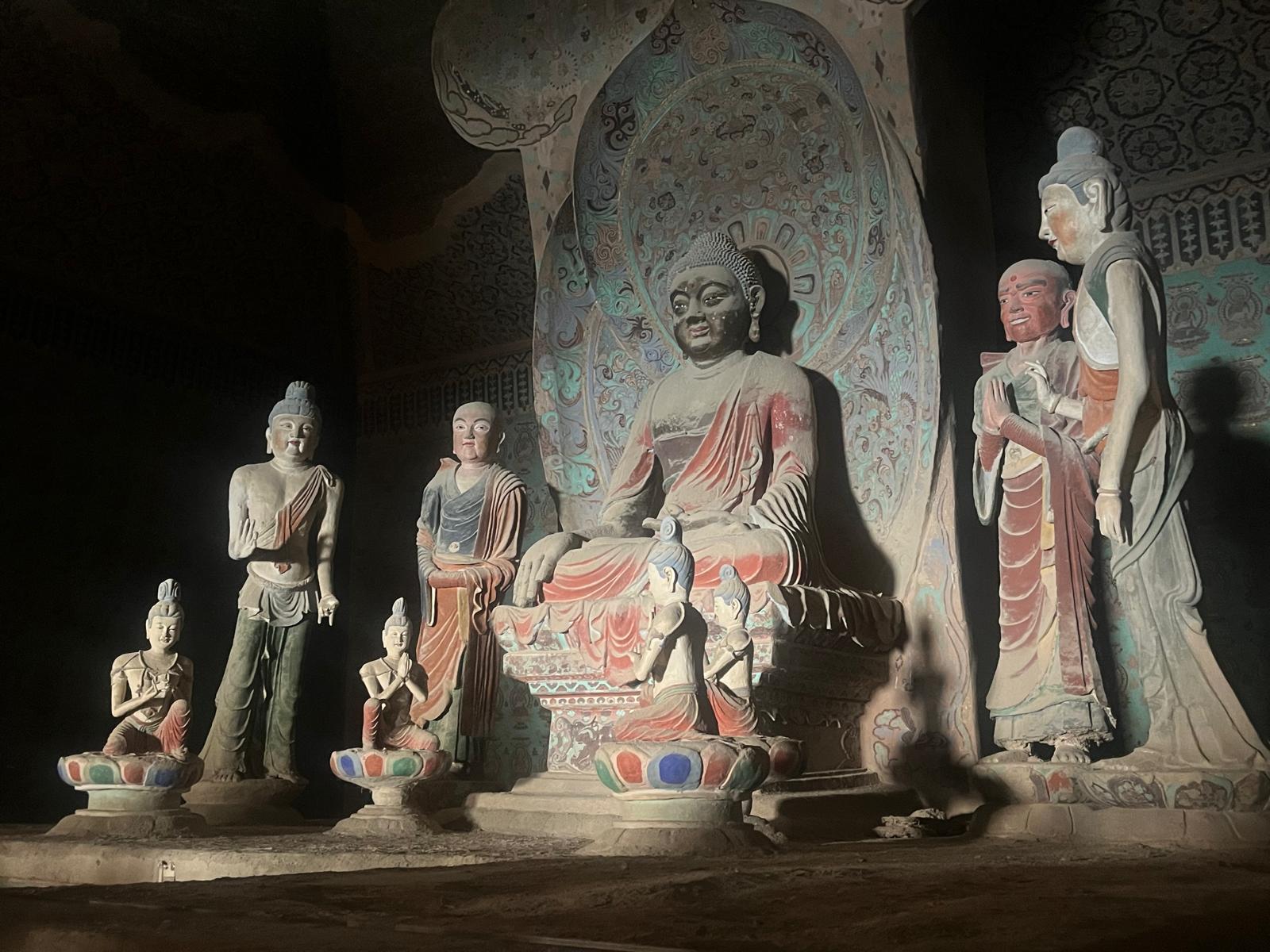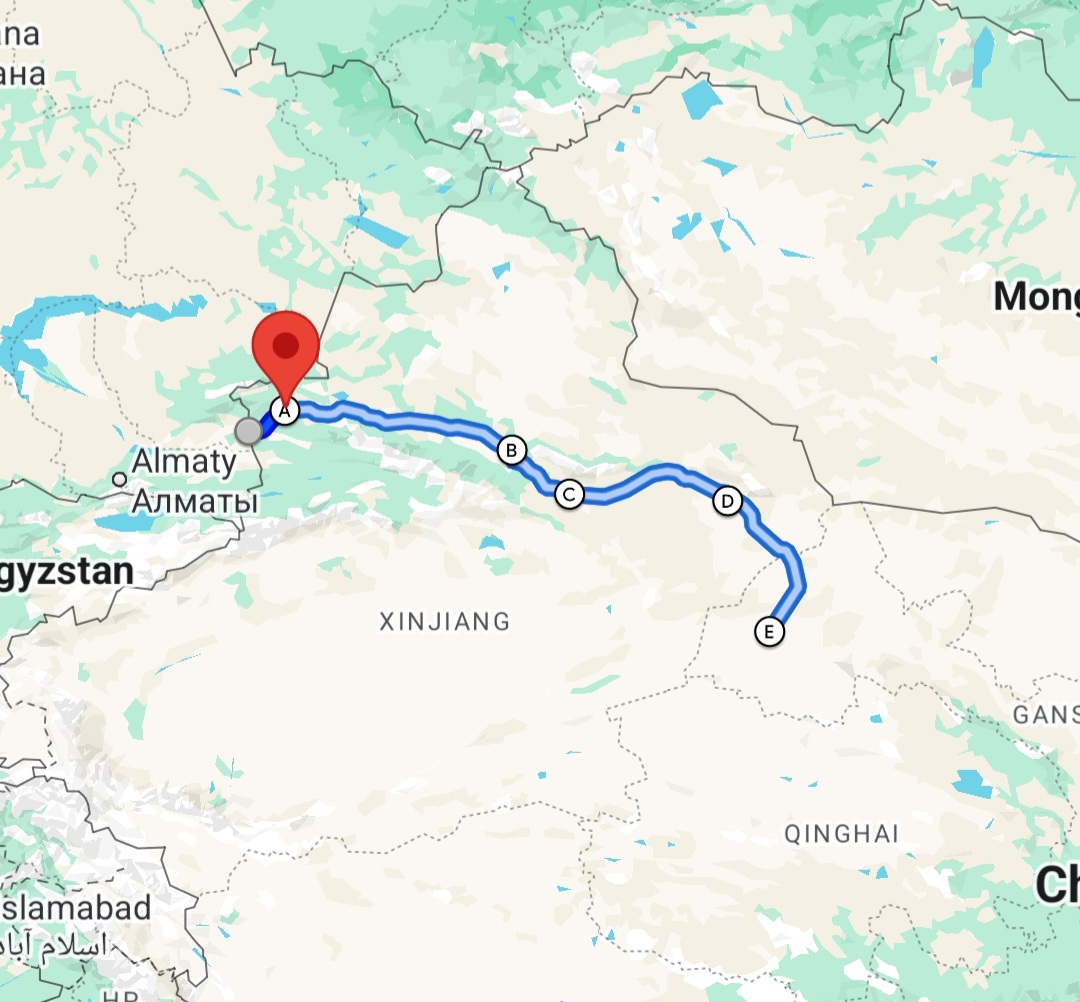We weren’t sure what to expect from the border. Would all our bags be searched? Our phones? In the end all they seemed concerned about was food products. We disposed of all meat and milk products and vegetables and approached the border only to be turned away- wrong crossing.
We backtracked and then headed for a more built up area. Our first town.
immigration was lengthy but not too intrusive. We all queued for a Covid test until they suddenly stopped doing them part way through. Then we had to fill in a registration form and slowly work through the queues. All the while everyone was pushing in and assuming the queue didn’t apply to them- maybe it didn’t.
We had allowed all day for this and we were pleasantly surprised by anly a few hours for the process. I had to put my bags through twice and then open one to show my nuts weren’t a prohibited item.
We got to our hotel by taxi as the truck wasn’t so lucky. It got thoroughly searched and had to undergo an MOT and then the drivers needed a medical check.
It was exciting walking through the night market seeing unusual fruit and vegetables. My mission though was a SIM card, I was fed up of indifferent WiFi and £5 for 40Gb was a bargain I got cash and was ready for anything. Not however, for the meal portions.
It was our first meal so I just picked two dishes from the four on offer at the hotel restaurant and got two beers £17 didn’t seem to bad. Then we got the first dish- it was enormous. We picked at it and couldn’t even attempt the second. We had them packed in large plastic tubs and they kindly stored them in their fridge for us.
The other issue was of course chop sticks! We came back and watched a video on how to do it and then practiced on spare pairs. We will be expert by the time we get to Tokyo!!
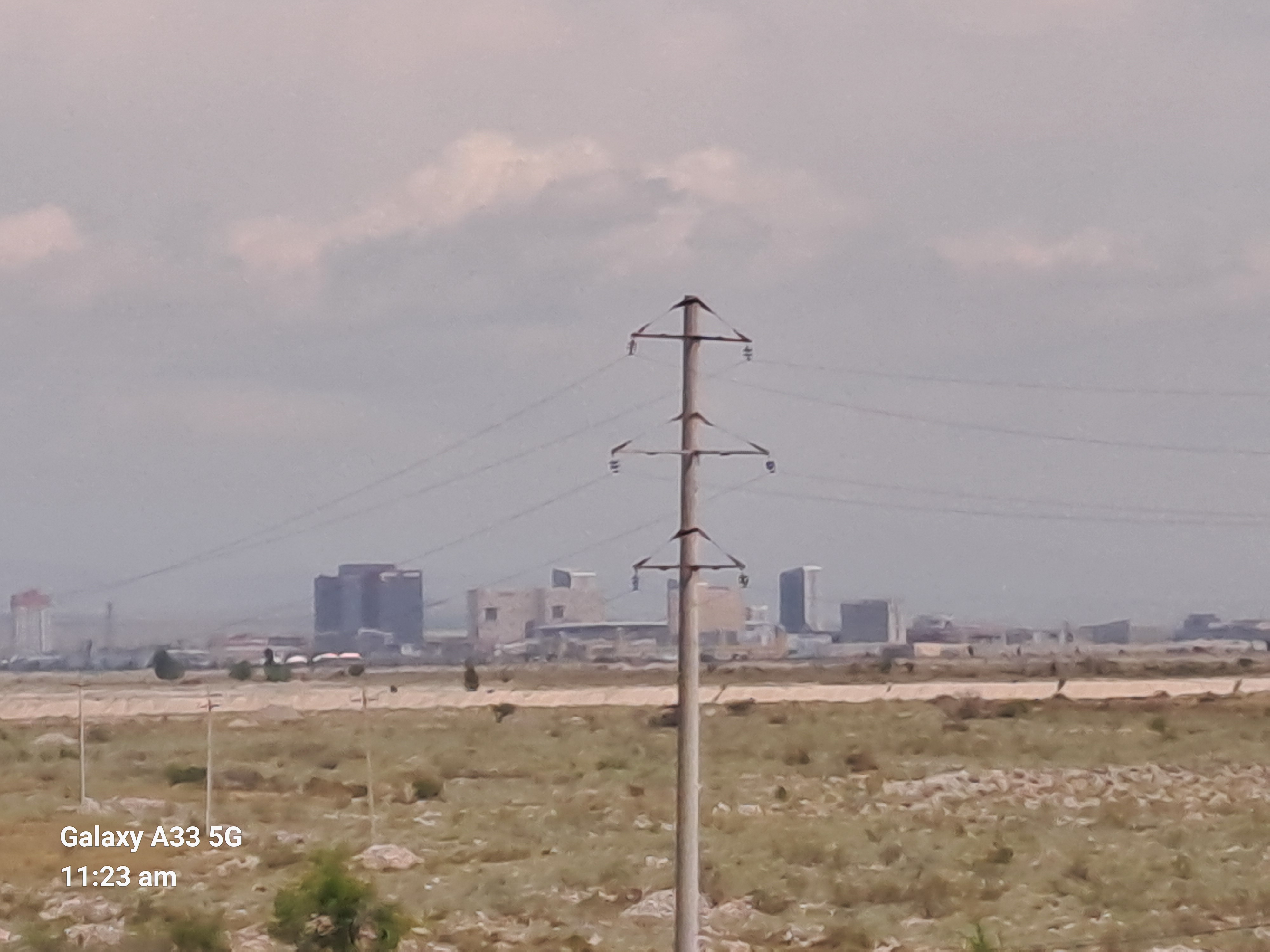

Next day I was off on a trip to a local supermarket with my cook group to shop for the evening meal. It was exciting seeing what was available and also the prices! I was given 400 yaun £40, abd came in well under budget., even with dragon fruit on the menu.
We persuaded the restaurant to keep these bags as well for us until the truck returned then all loaded up and we were off into China.
We headed through green hills and eventually came to Gouzigou bridge the highest and first cable bridge in the Xinjaing province. We drove under it and then around to find a view point.
Here came our introduction to Chinese tourism. We came to a large parking area with steps built down from it and viewing platforms and several women in brides dresses scattered around being made up or photographed, however, the park was full as was the second.
We were lucky at the third though and parked up to see the view.
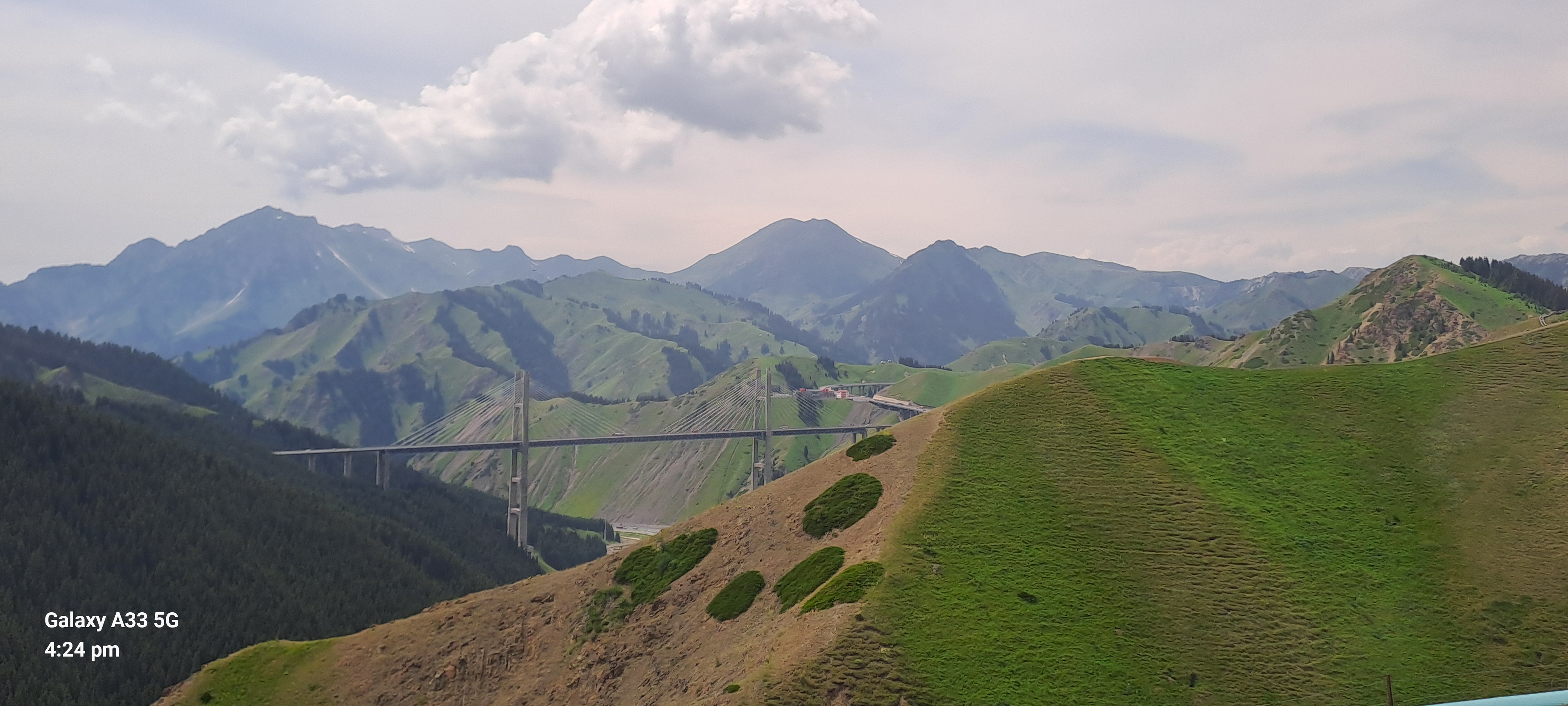
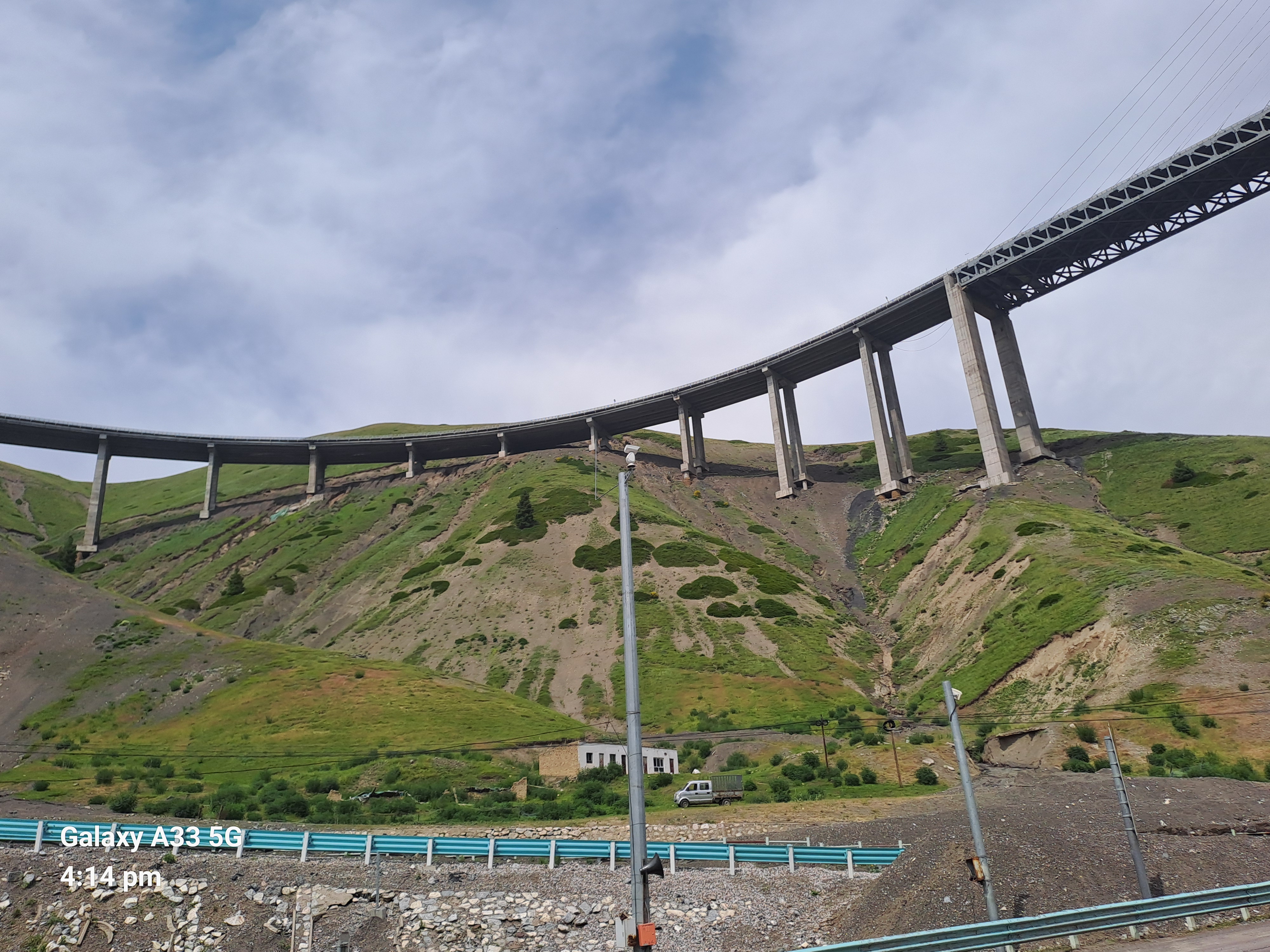
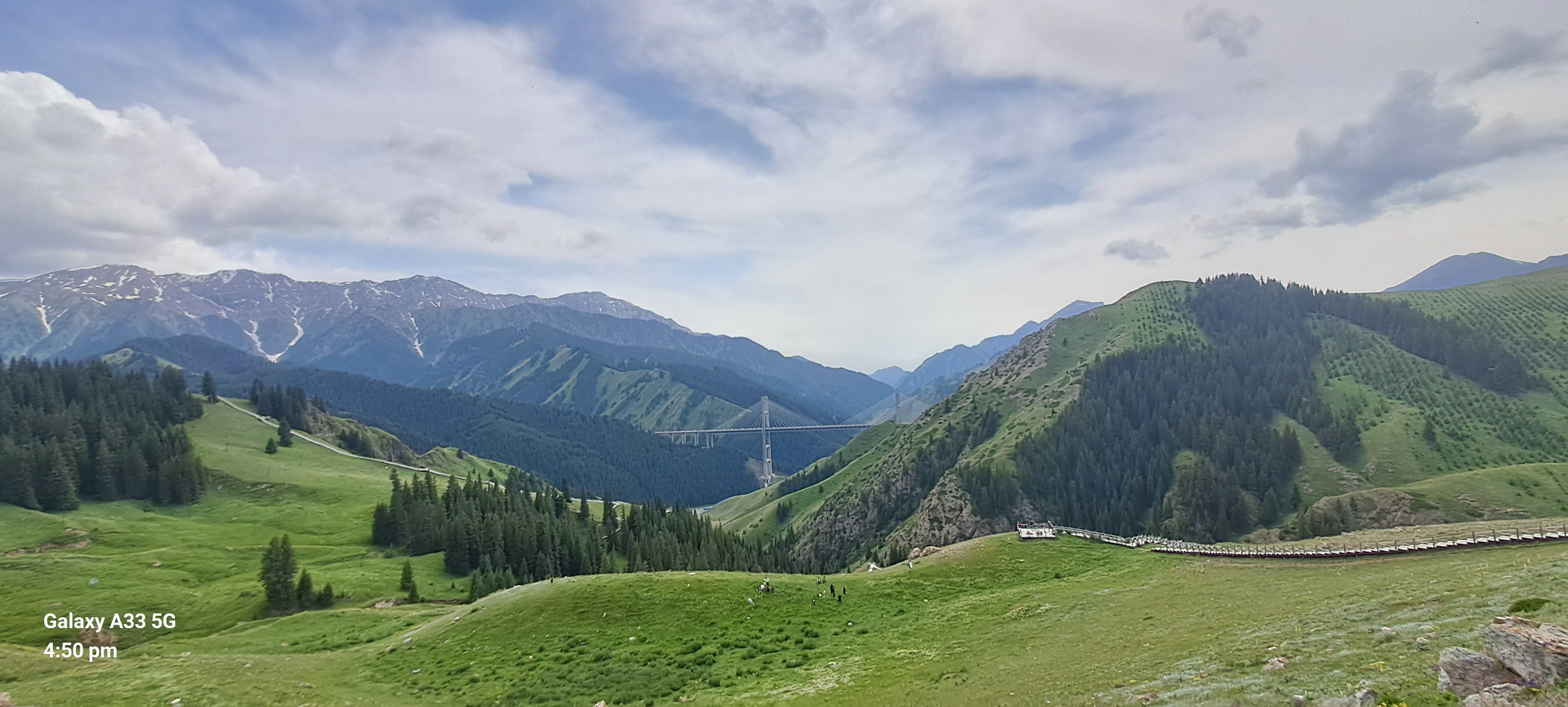
There were food stalls, horse rides, souvenirs and a viewing platform still being completed. The workmen welding inches from the tourists walking past
Our bush camp was at a field next to a stream not far away . Unfortunately, since a previous tour visit, the field had been closed off by fences and appeared to not be avaliable. It was also full of brides having photos taken. After some discussion it was decided that a limited number could camp and the rest hire yurts. It was a no brainer for us. Cookgroup limited our time for setting up a tent plus it looked like rain.
It was then cooking in the rain, all the brides disappeared, made easier with the addition of last night’s restaurant food in the mix.
We will have an everlasting impression of John G straining noodles between his legs (bent over straining from a very large pan into a colander over a pan).
The toilet here was up a slope to a tin hut. Inside was a plank, a large gap, another plank, another large gap! Instant thoughts of falling in in the dark! Not only that, while squatting and holding trousers out of the way the door needed holding shut by means of a piece of string or it flew open.
Next day was our last personal cook group for everyone and we left for Urumqi.
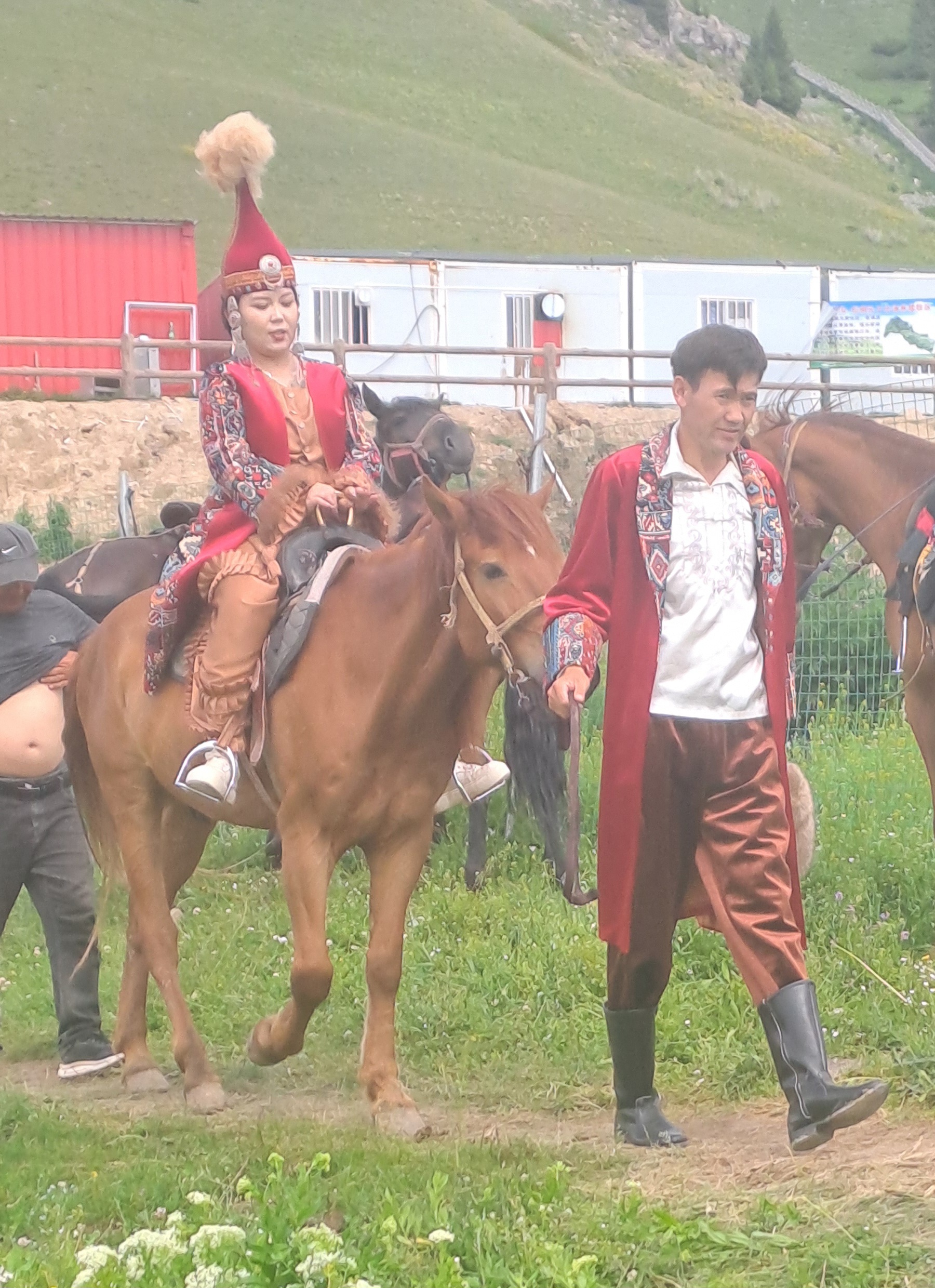
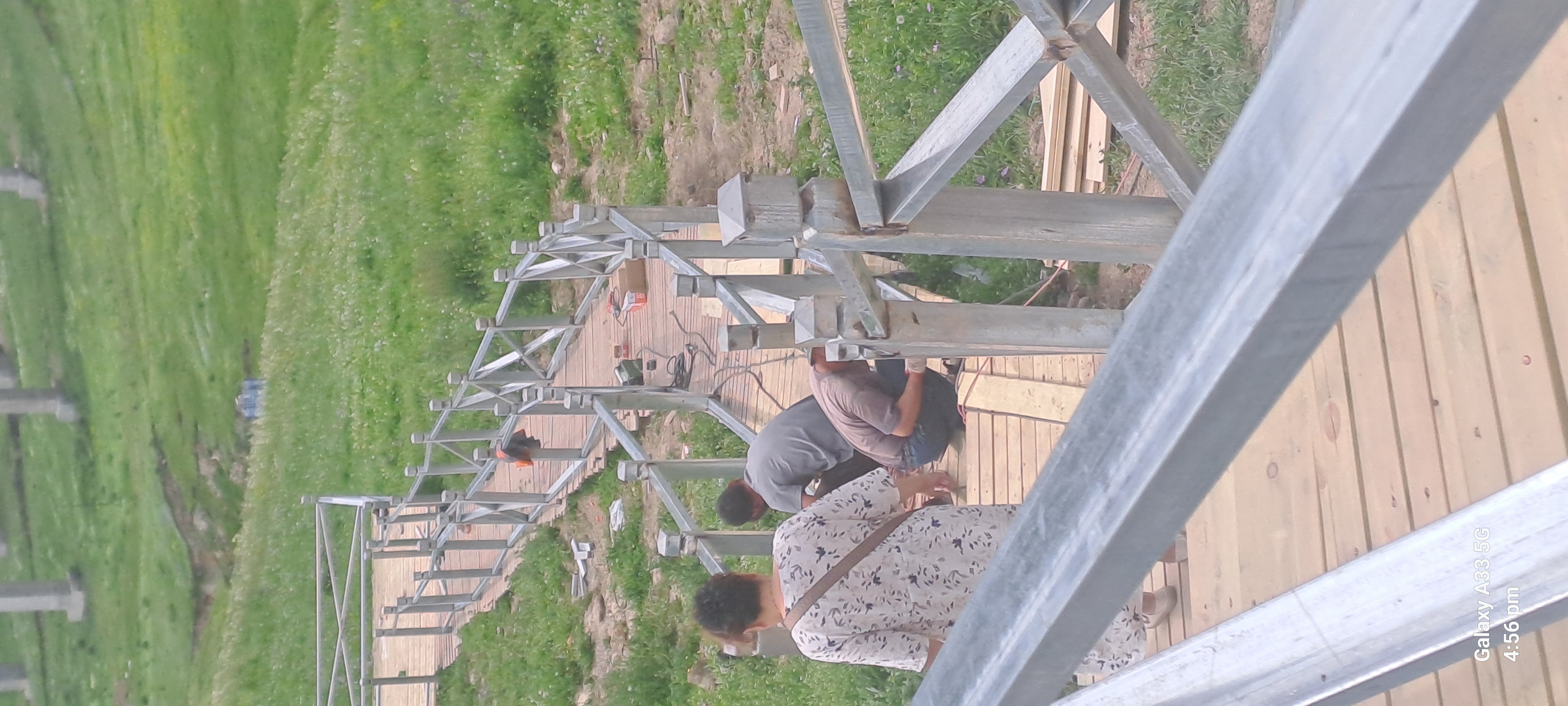
We drove past Sallimu Lake on the way, the largest and highest lake in Xinjiang. We also drove past the largest solar power farm on the world, 200,000 acres of it.

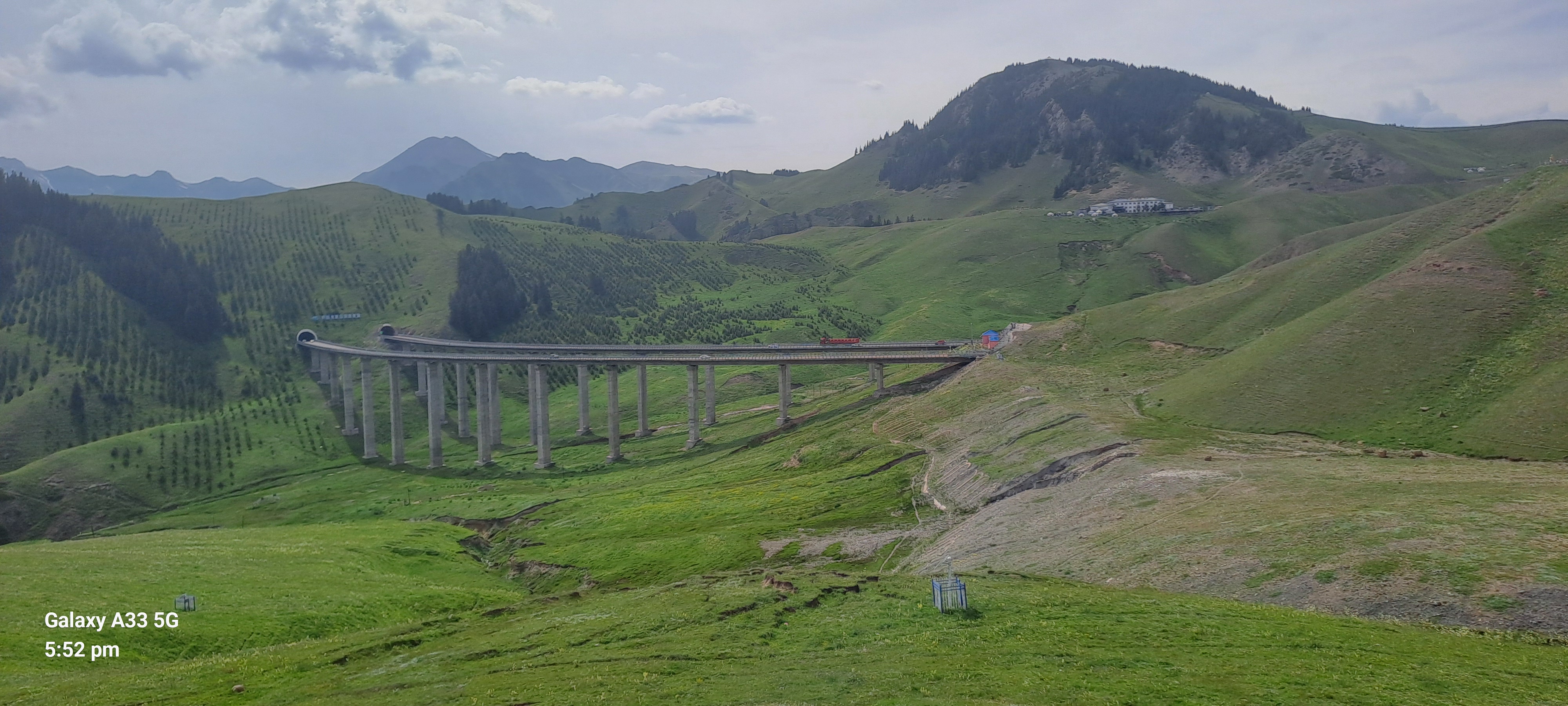
Urumqi is the capital of Xinjaing province. It was a shock after the cities in the Stans. It is enormous, it is also where discovered the joys of a Chinese buffet breakfast, so much, how to chose! Unfortunately a Chinese diet hasn’t suited everyone some people have struggled with the unfamiliar food.
We had to get an early start to the museum as the crowds build up quickly. We started with a quick introduction to Chinese history.
Western China was the gateway to the west for trading and alliances were set up around 200 BC for the silk road.
The silk road brought communication, materials and technology with it. Water conservation as we saw later. The economies of the oasis towns prospered.
Buddhism came in through this route from India in the 1st century BC and spread in the western plains from the 4th to 6th centuries. Multi culturalism flourished in the Western region with religions from the east mingling in. In the 9th and 10th centuries Islam was accepted by the Khan and this took over
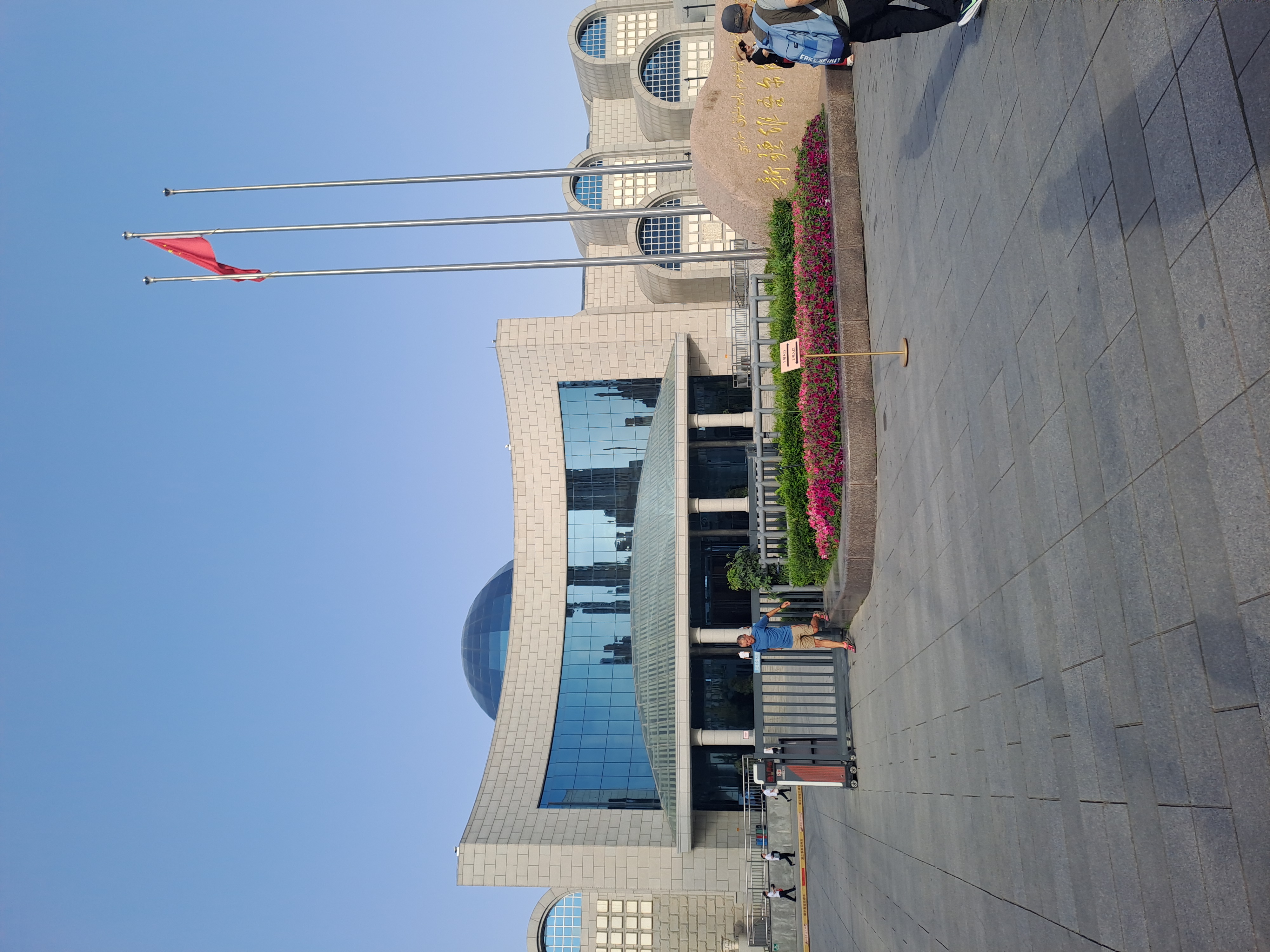


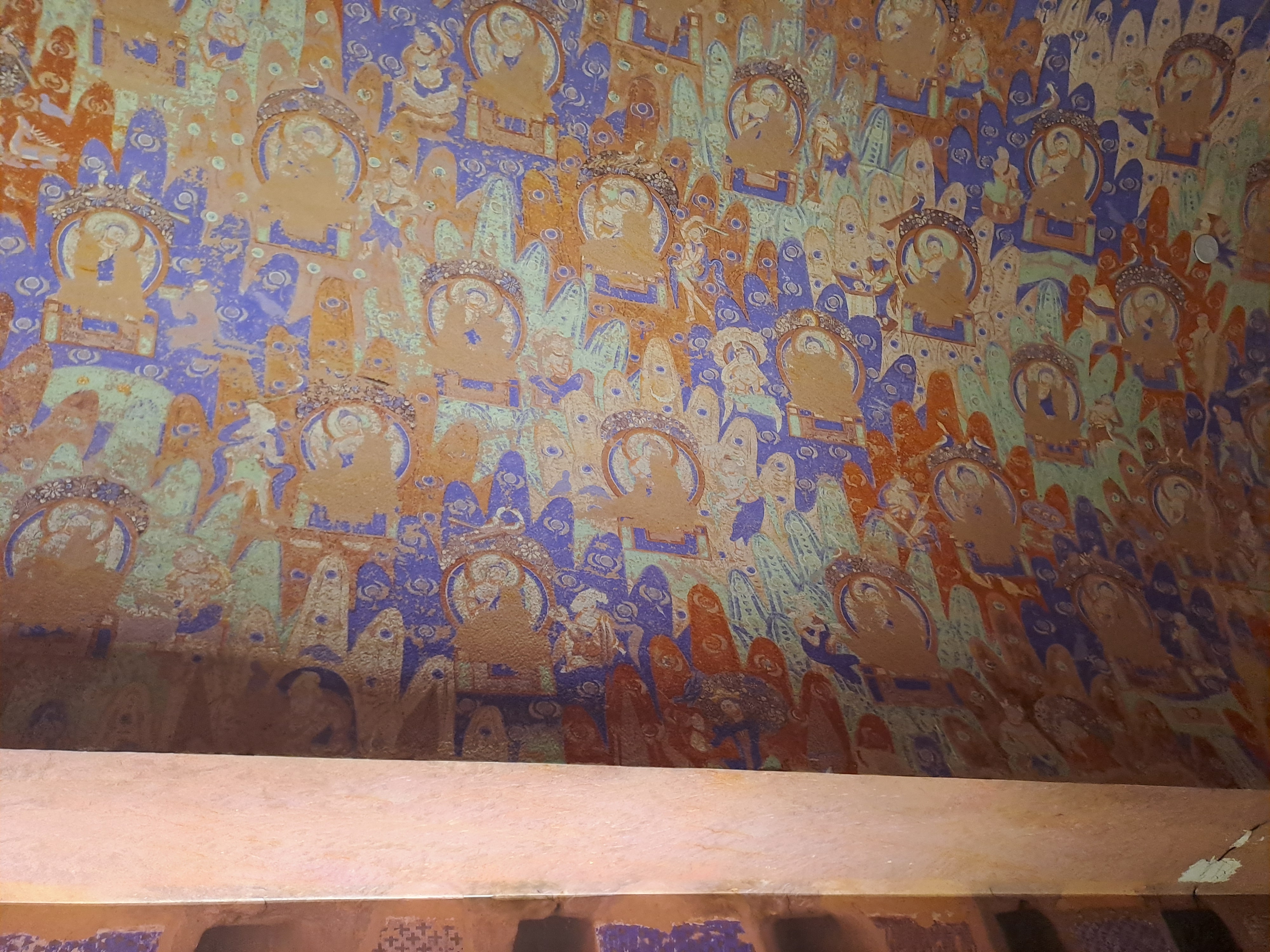
fgh
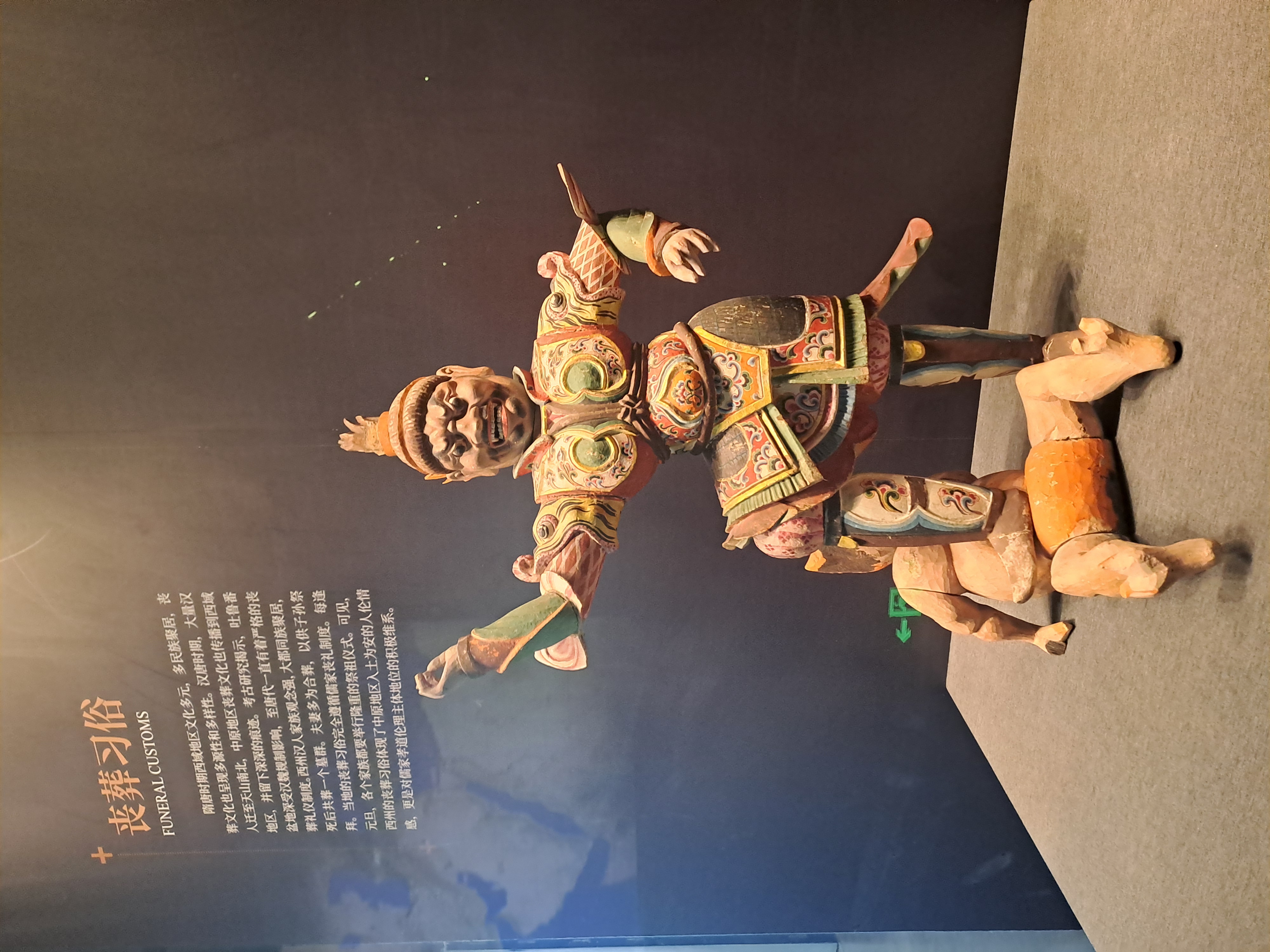

Our next visit was to Heavenly Lake and a further experience of how tourism works in China. We drove to a huge car/coach park and then from there to large building like an airport terminal with a massive screen. Here we bought tickets and went through security and all for a lake!
After this we got the shuttle bus (a must at every attraction) and traveled to the lake. We then had to walk the last bit to get there, to our surprise there was already a steady stream of people coming back. At the end we met a KFC and a whole lot more plus crowds of people standing on any stone or raised bit for pictures . All for a lake.
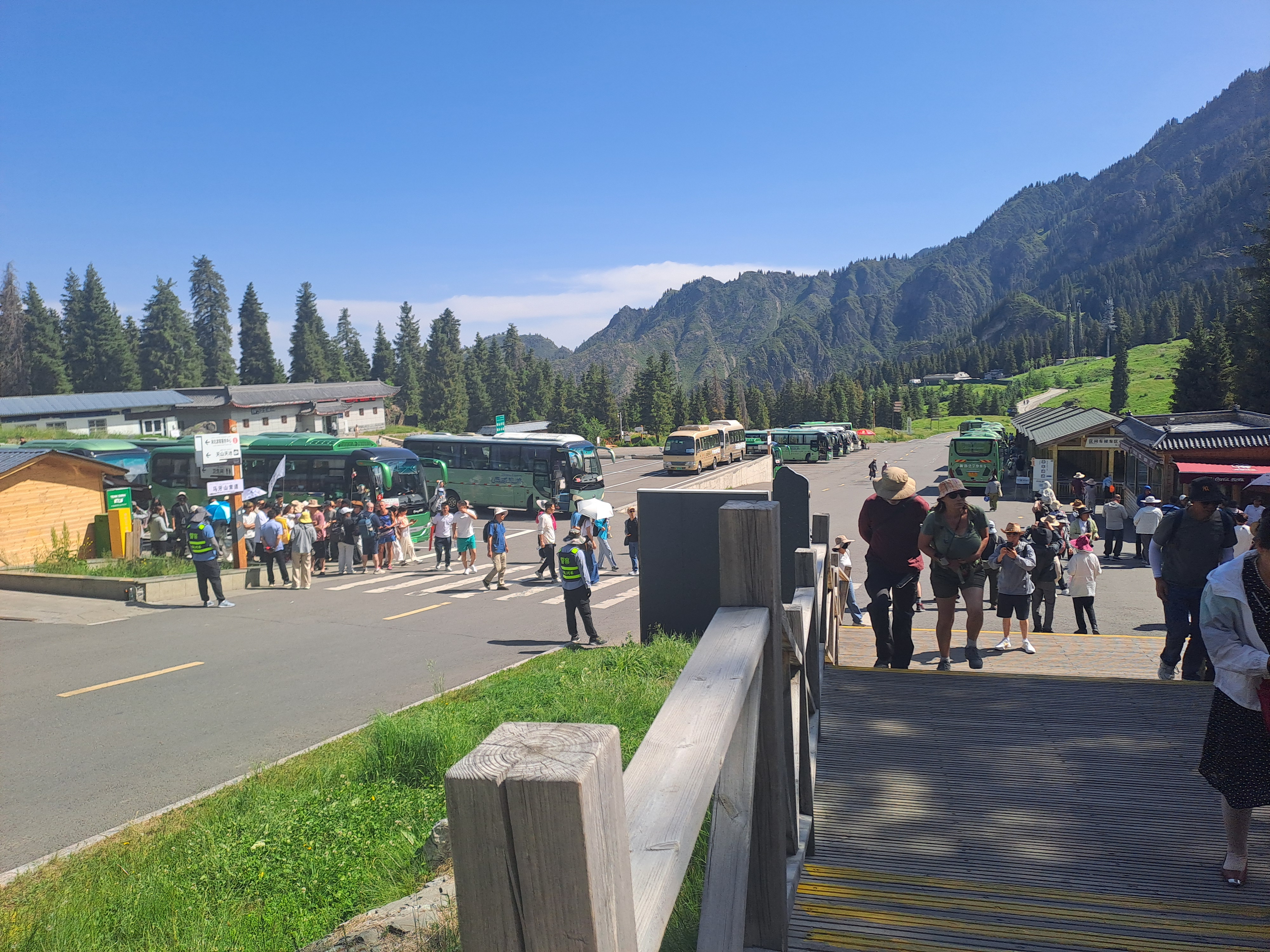


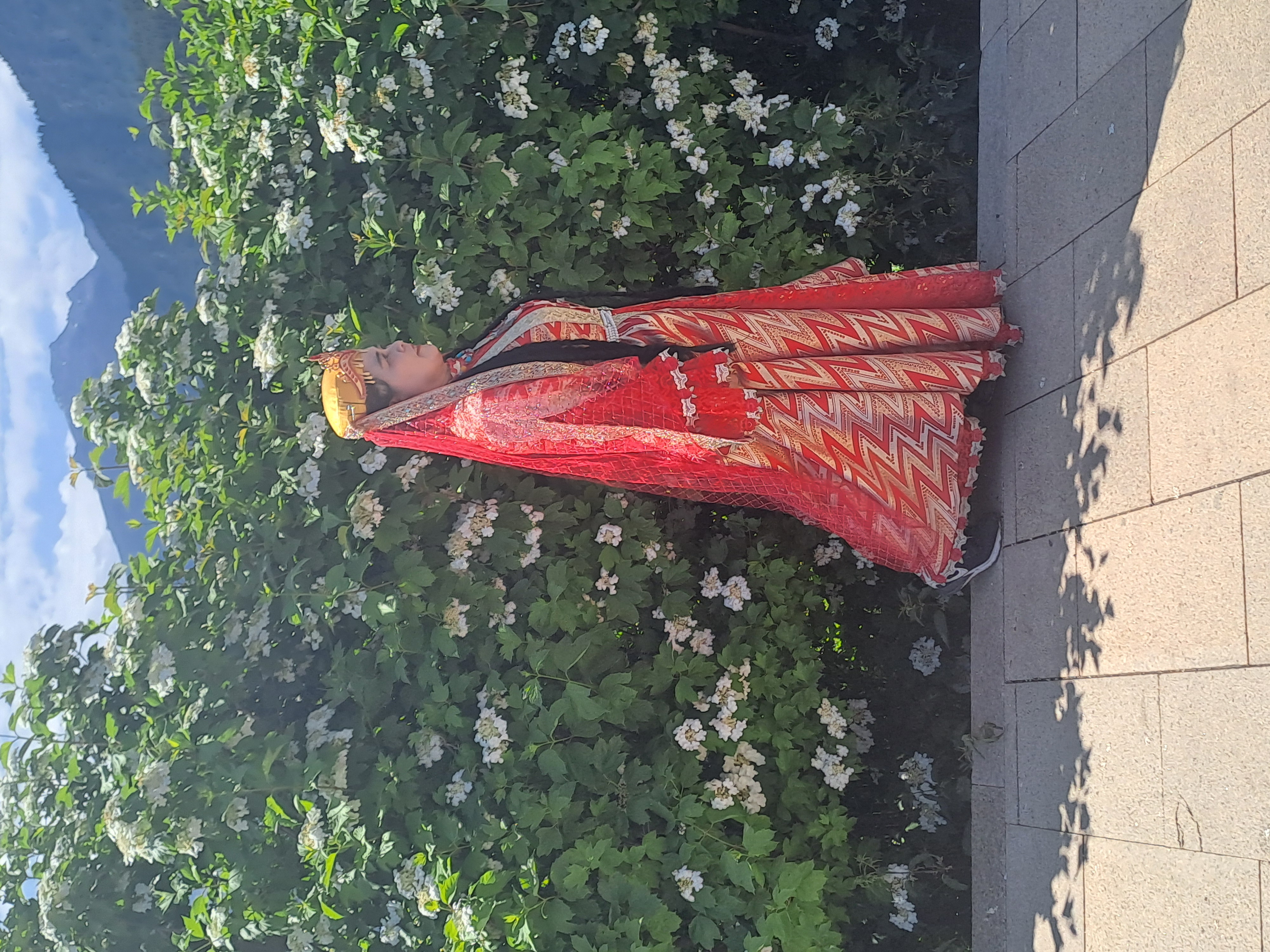
I decided to take the scientific walk along the lake to the mountain. The crowds slowly disappeared the loud speakers went and it was a pleasant walk with optional side routes. I gradually met up with fellow travellers from the truck here.
The last section cling to the cliff and was single file. At the end the choice of the dragon boat back or the climb to the temple.
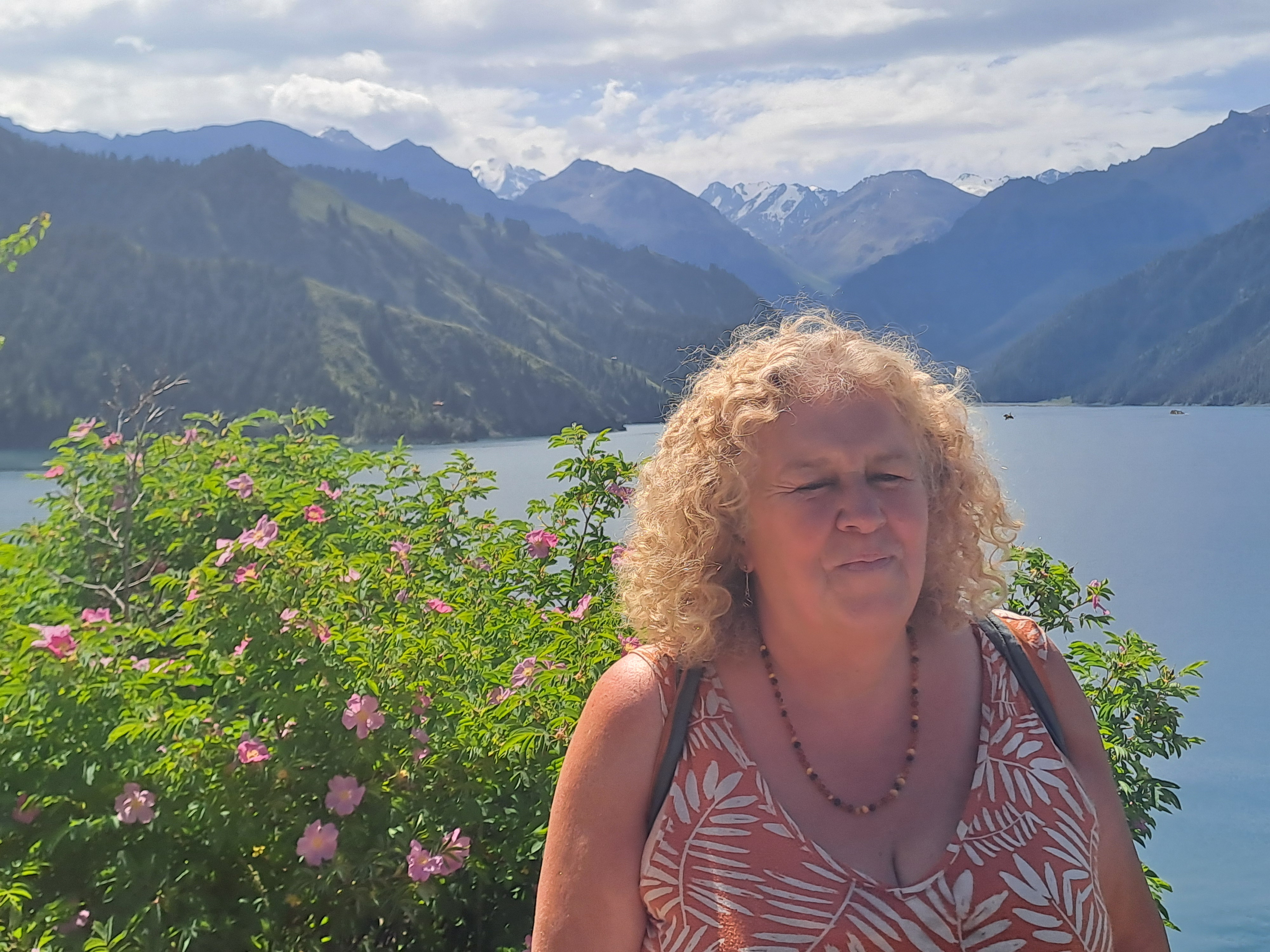

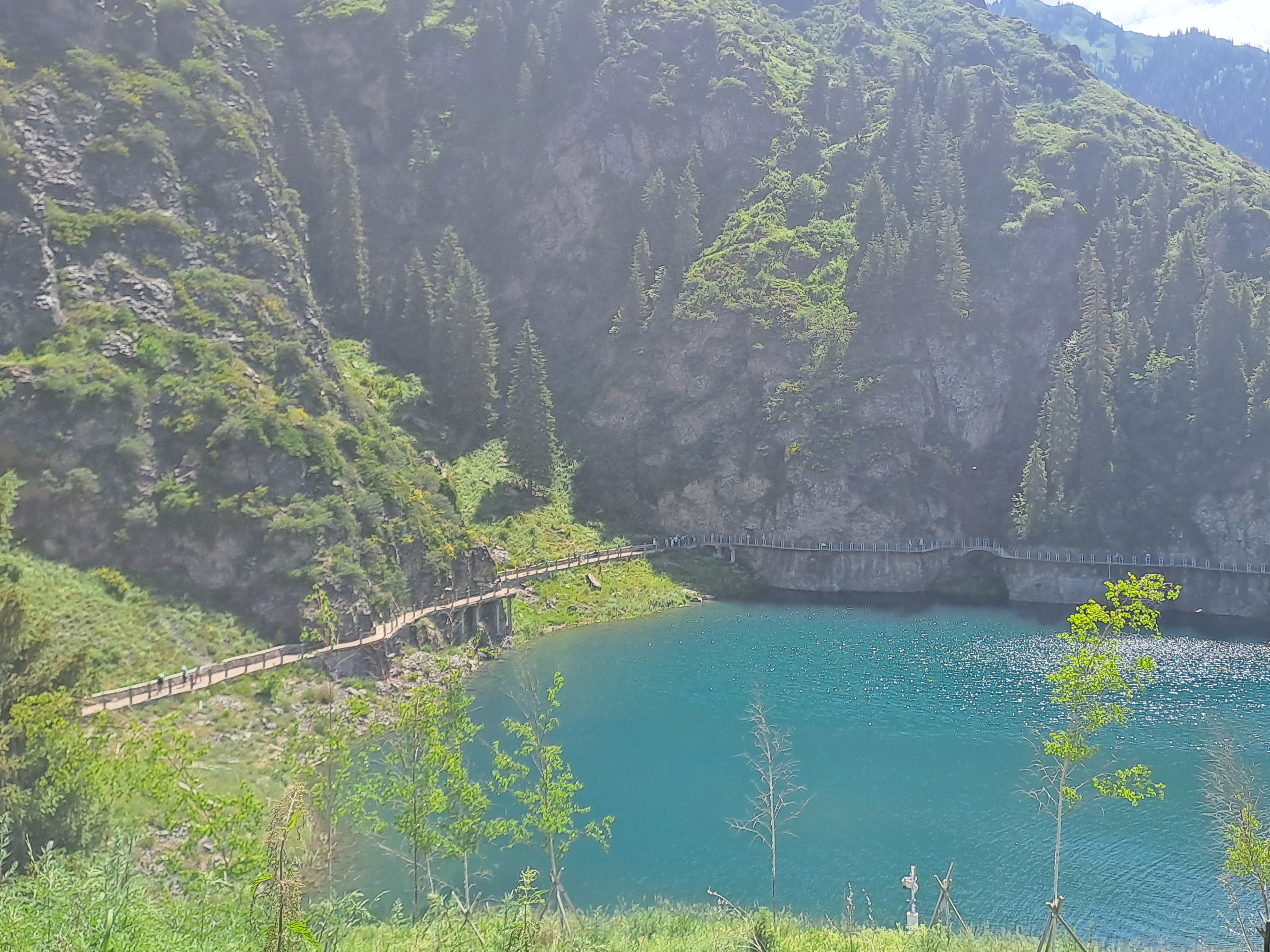

So up to the temple, a working temple, with candles on sale and pilgrims visiting.


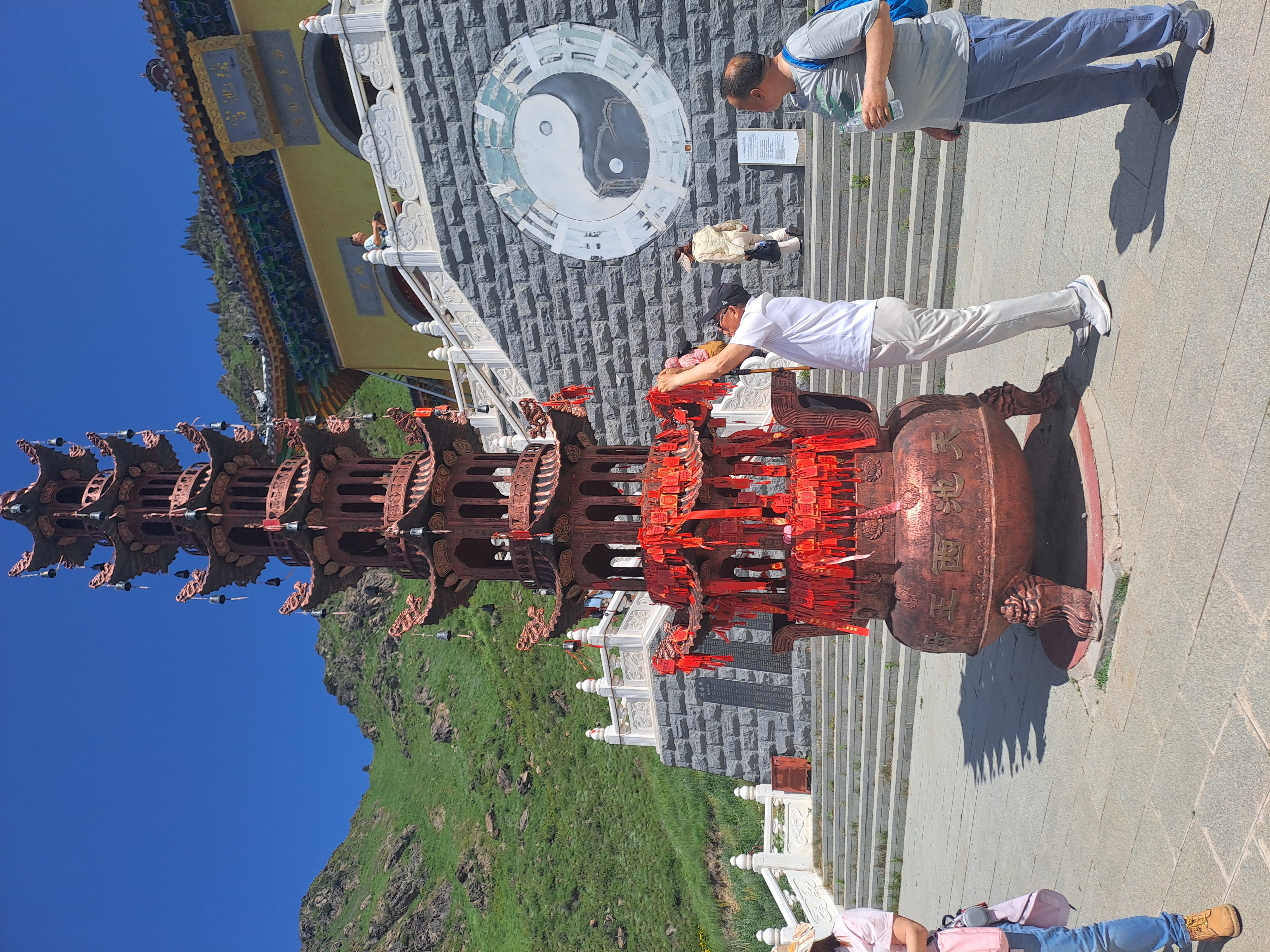
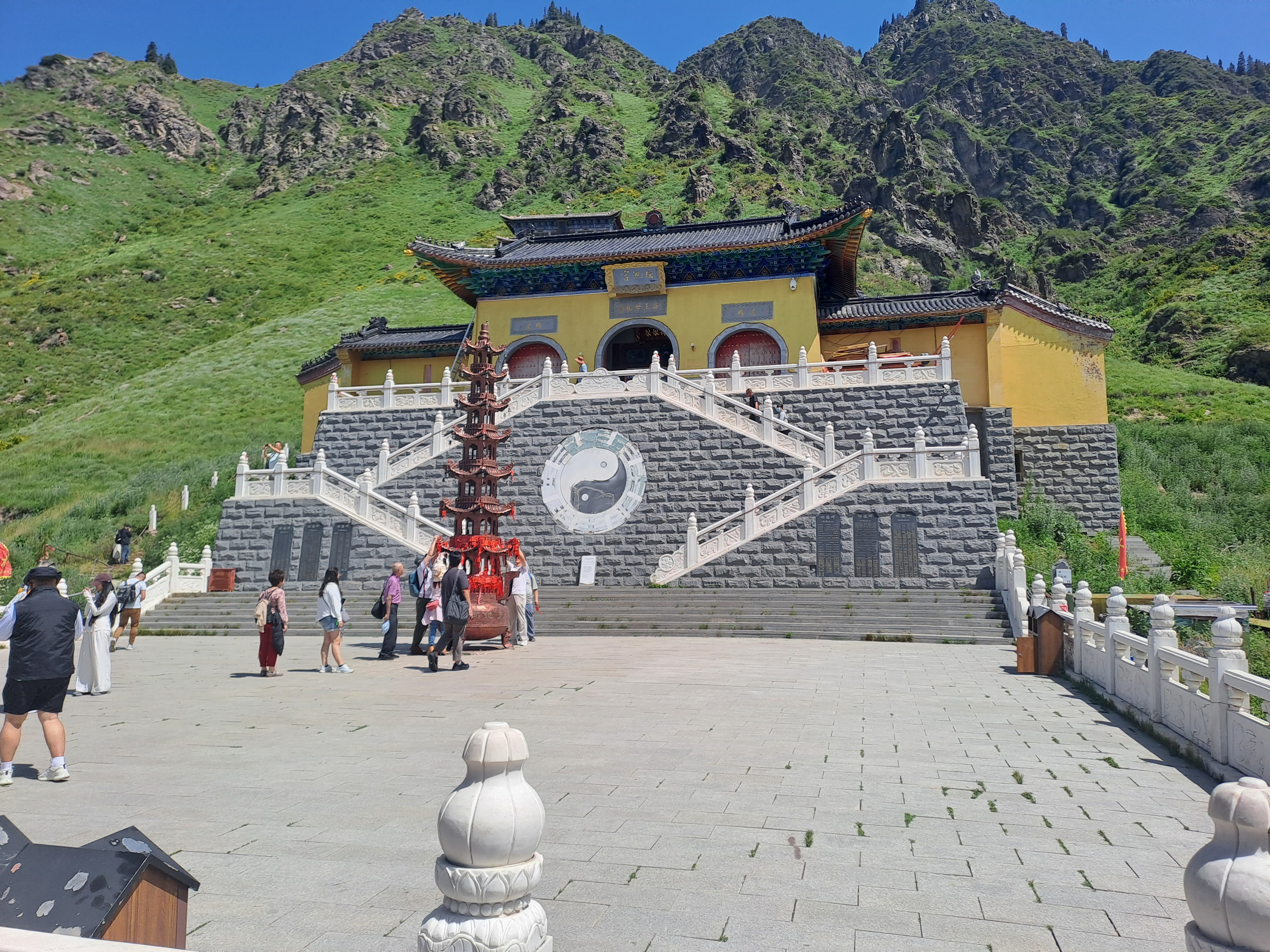
There was a group of women pilgrims all bowing and turning with their long candles and the offering cloth to the various statues.




We then went up some rather dodgy steps to higher small temple with a great view. This was carved out of the cliff.


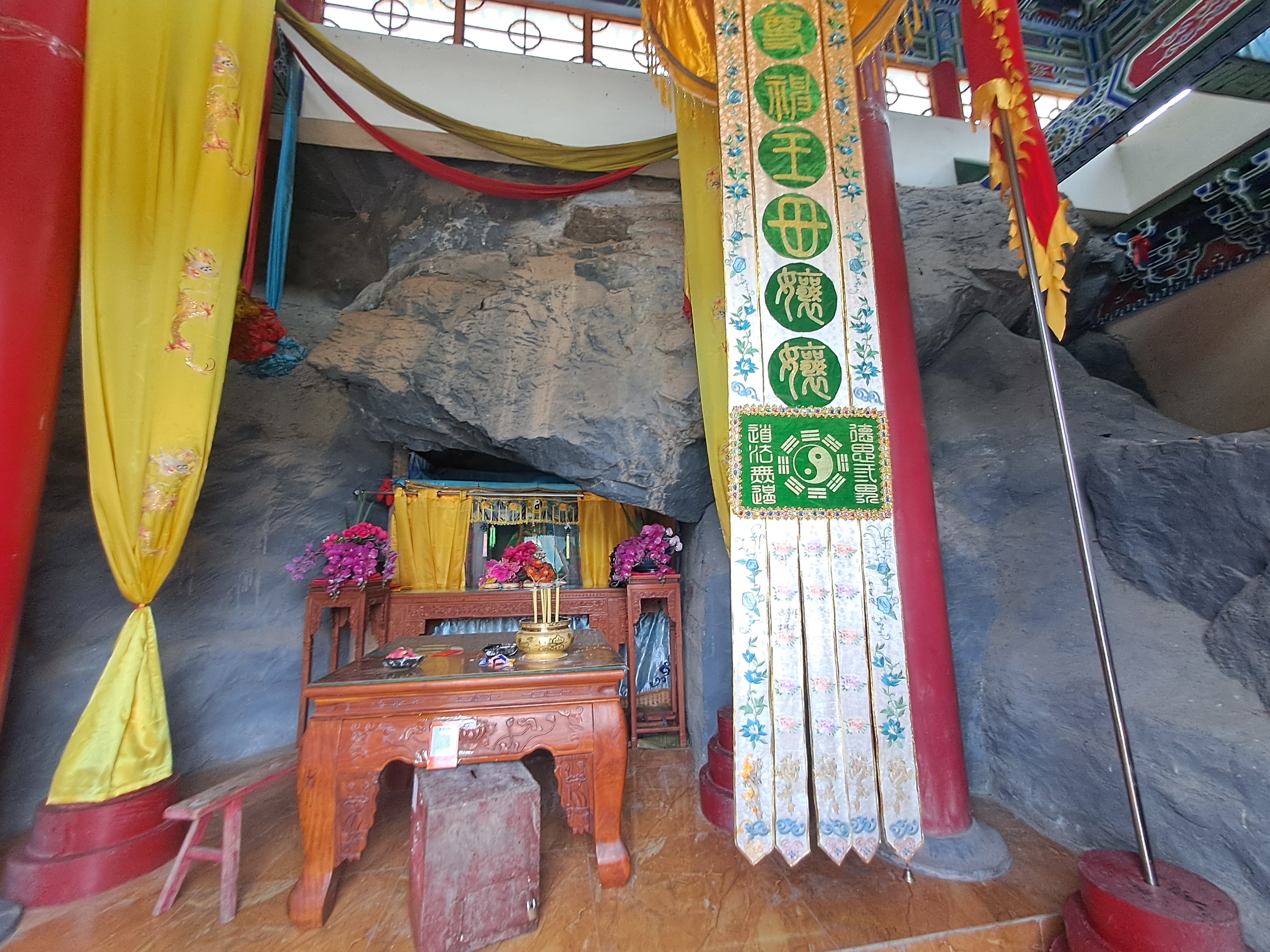

Due to time constraints a couple of us took the boat back and got time for a beer.
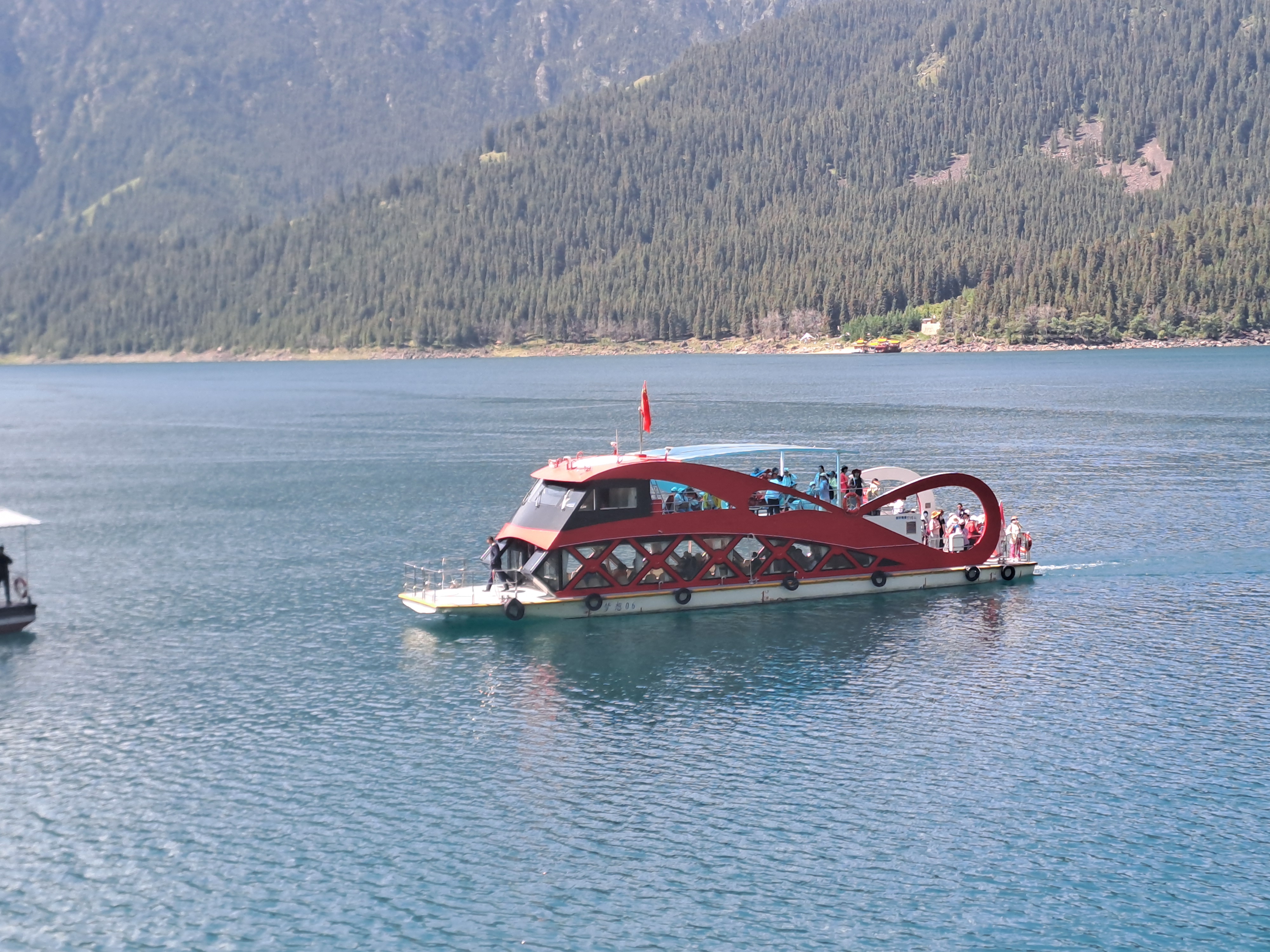

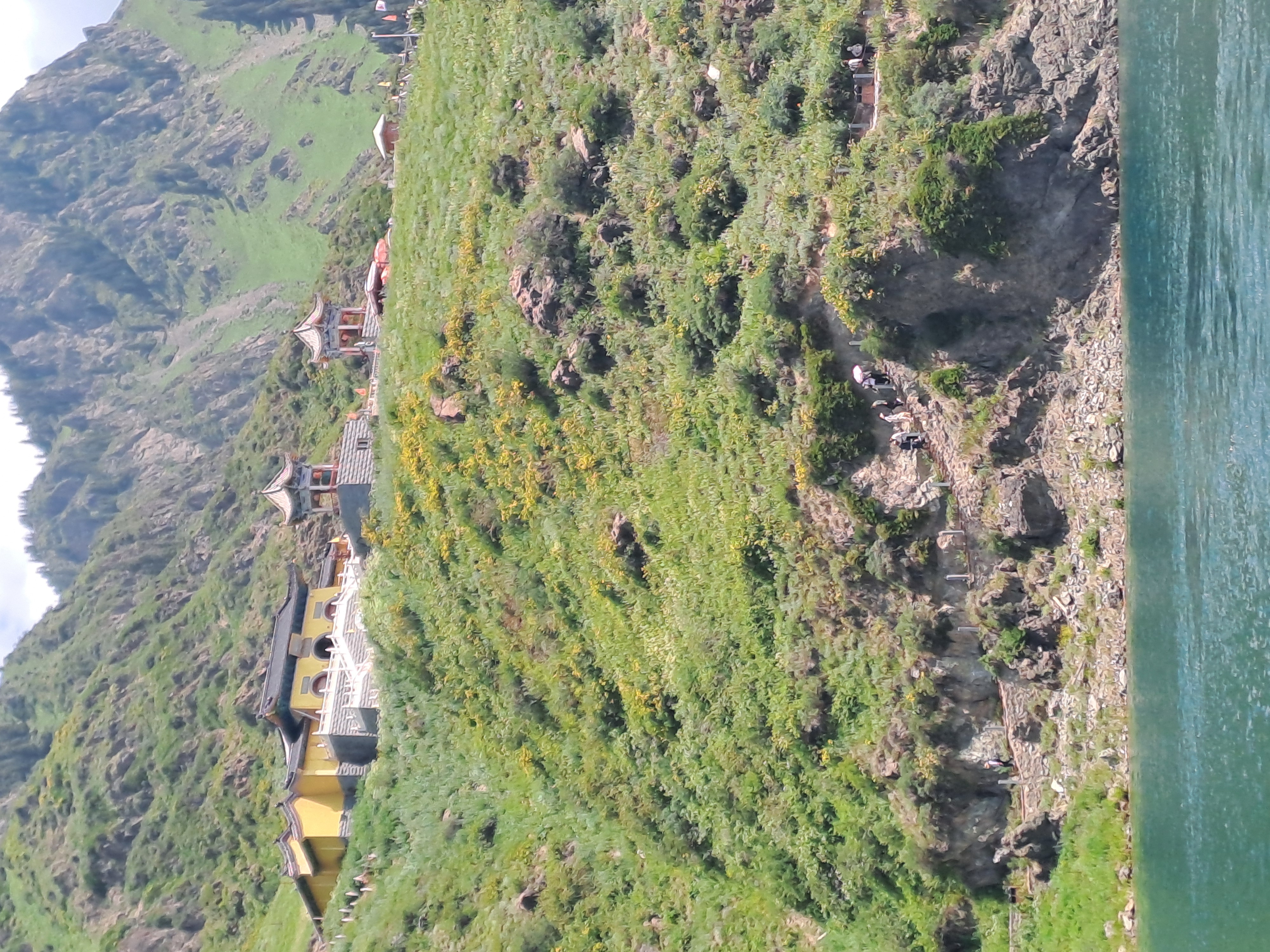
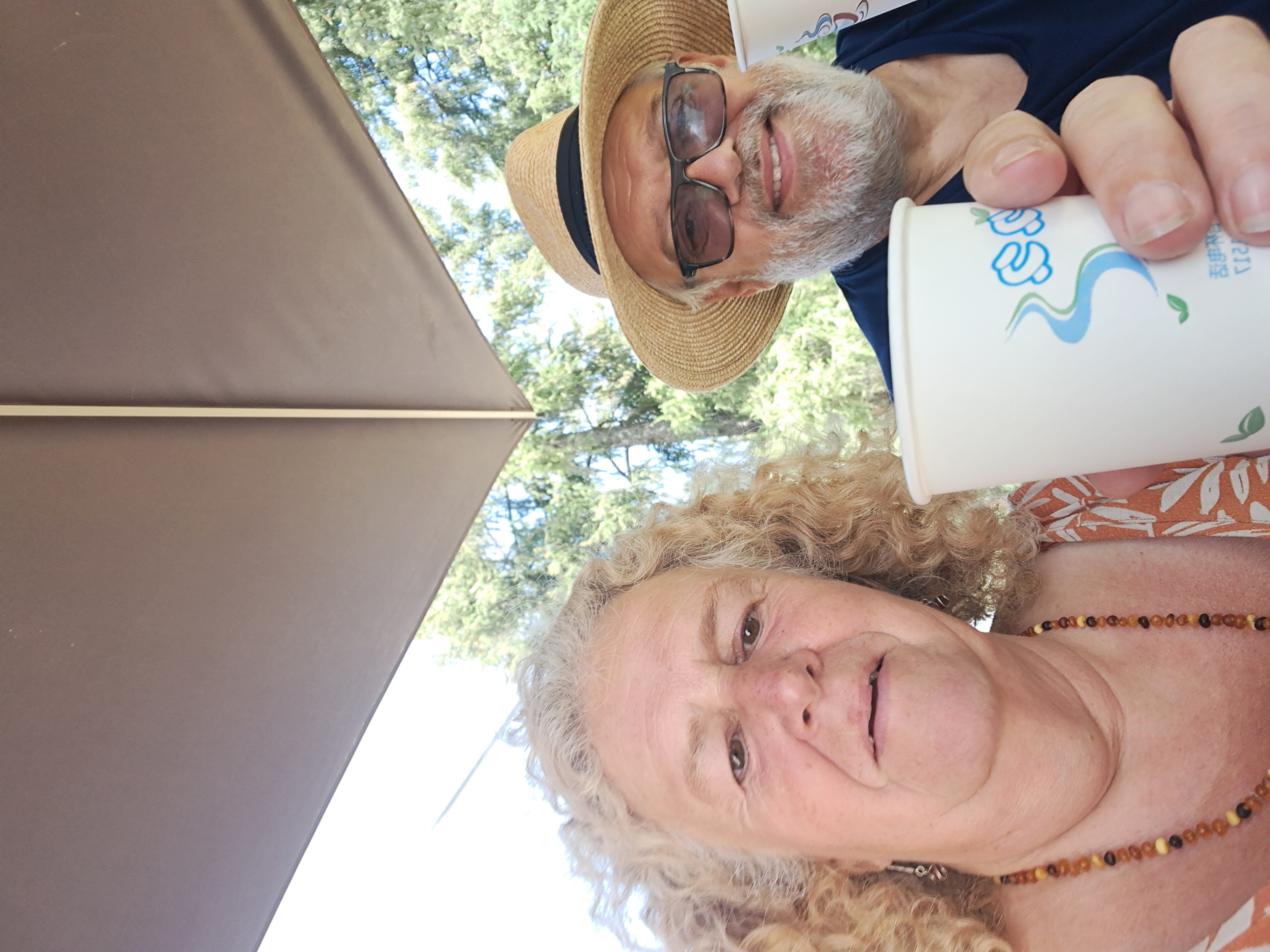
Due to a popular request for a wine tour, did you know China is now the world’s largest market for red wine, we visited grape valley. Another tourist extravaganza. We loaded onto a shuttle and headed off expecting to find out about grape and wine production. What we got was lots of fibreglass wood and a virtually empty museum and admittedly lots of grape vines. We did several stops mainly just for market stalls and found no wine on offer when we had lunch. In retrospect this was a Muslim area and a lot of the grapes are dried rather than used for wine.
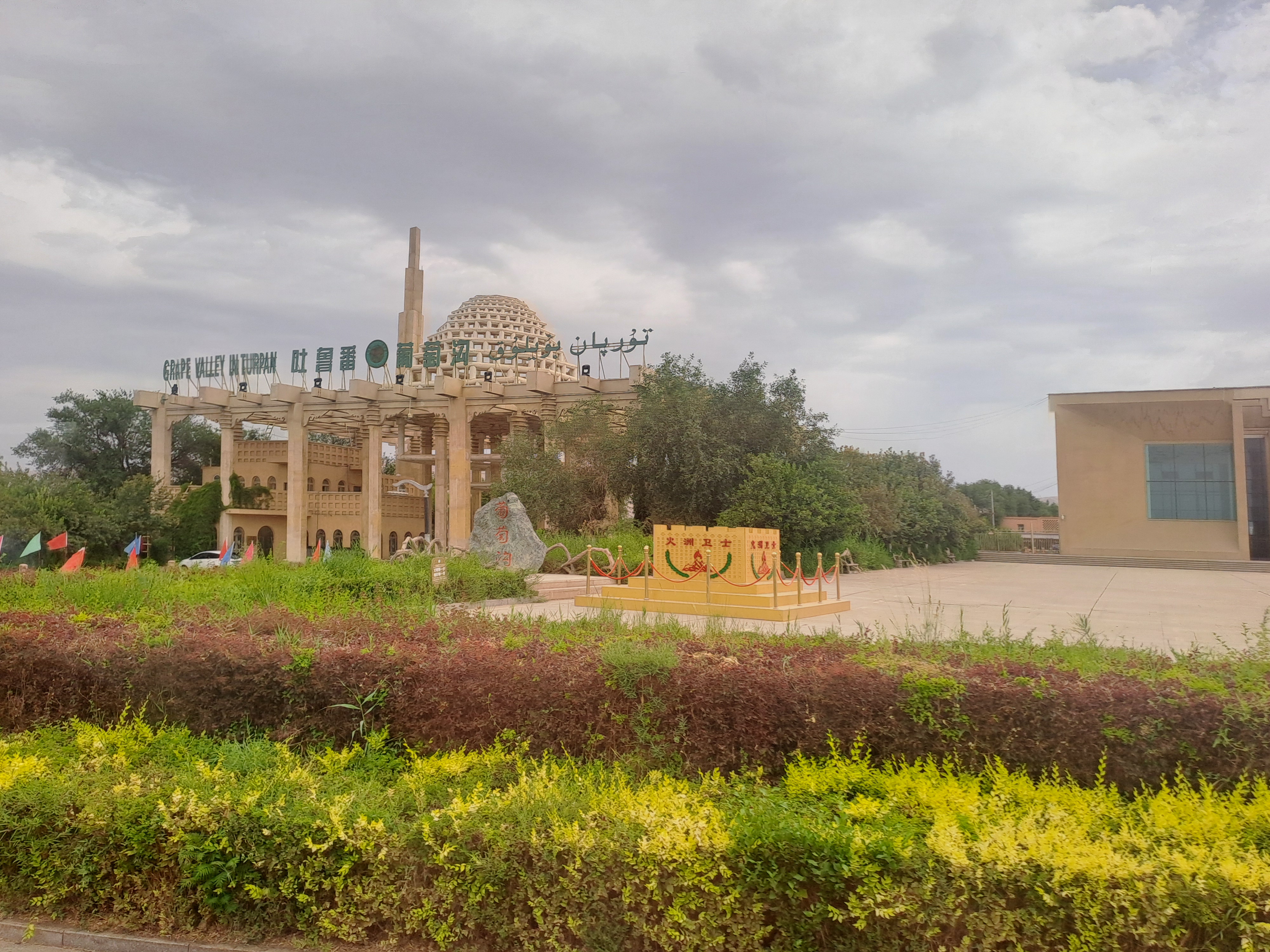
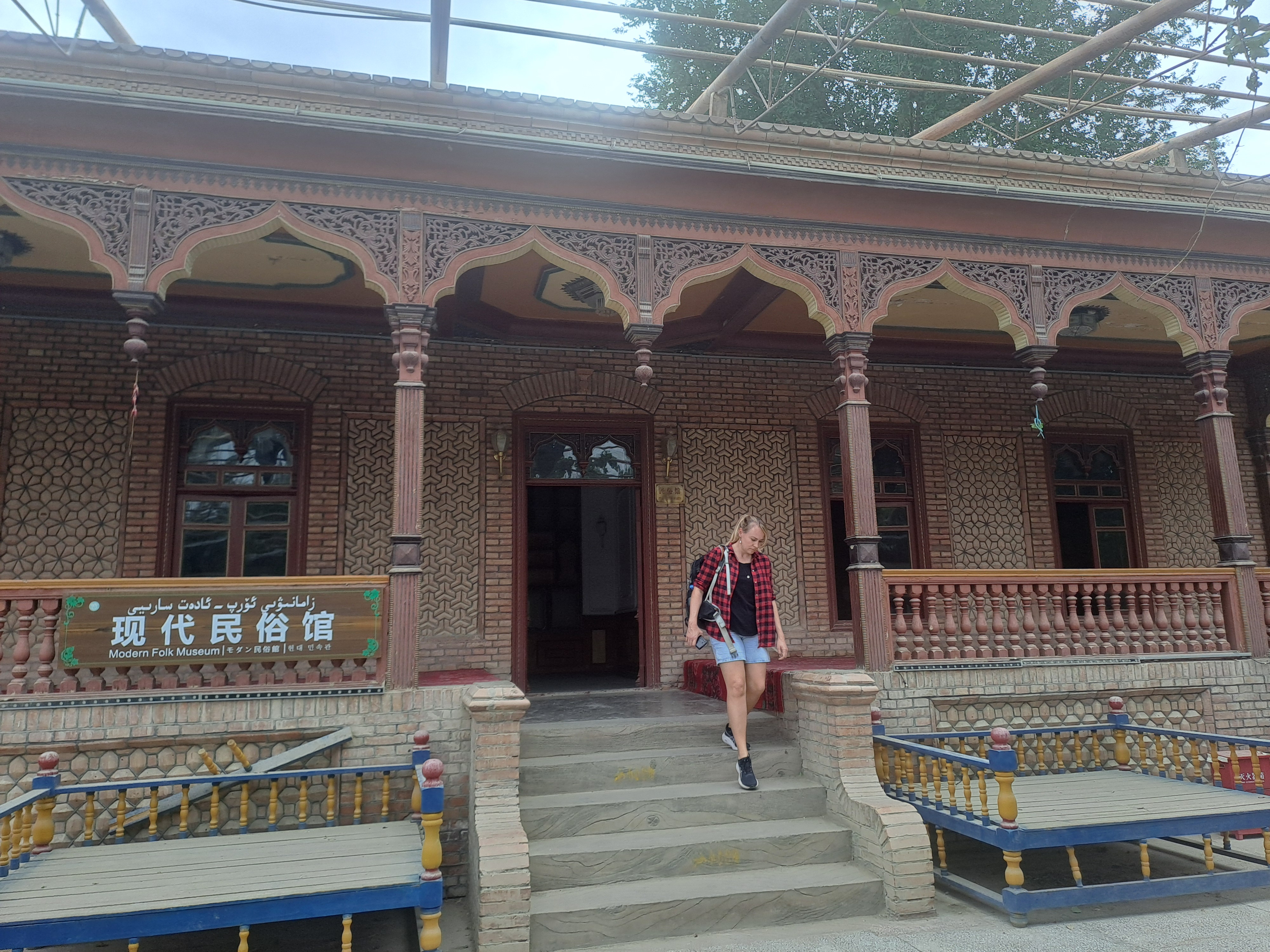
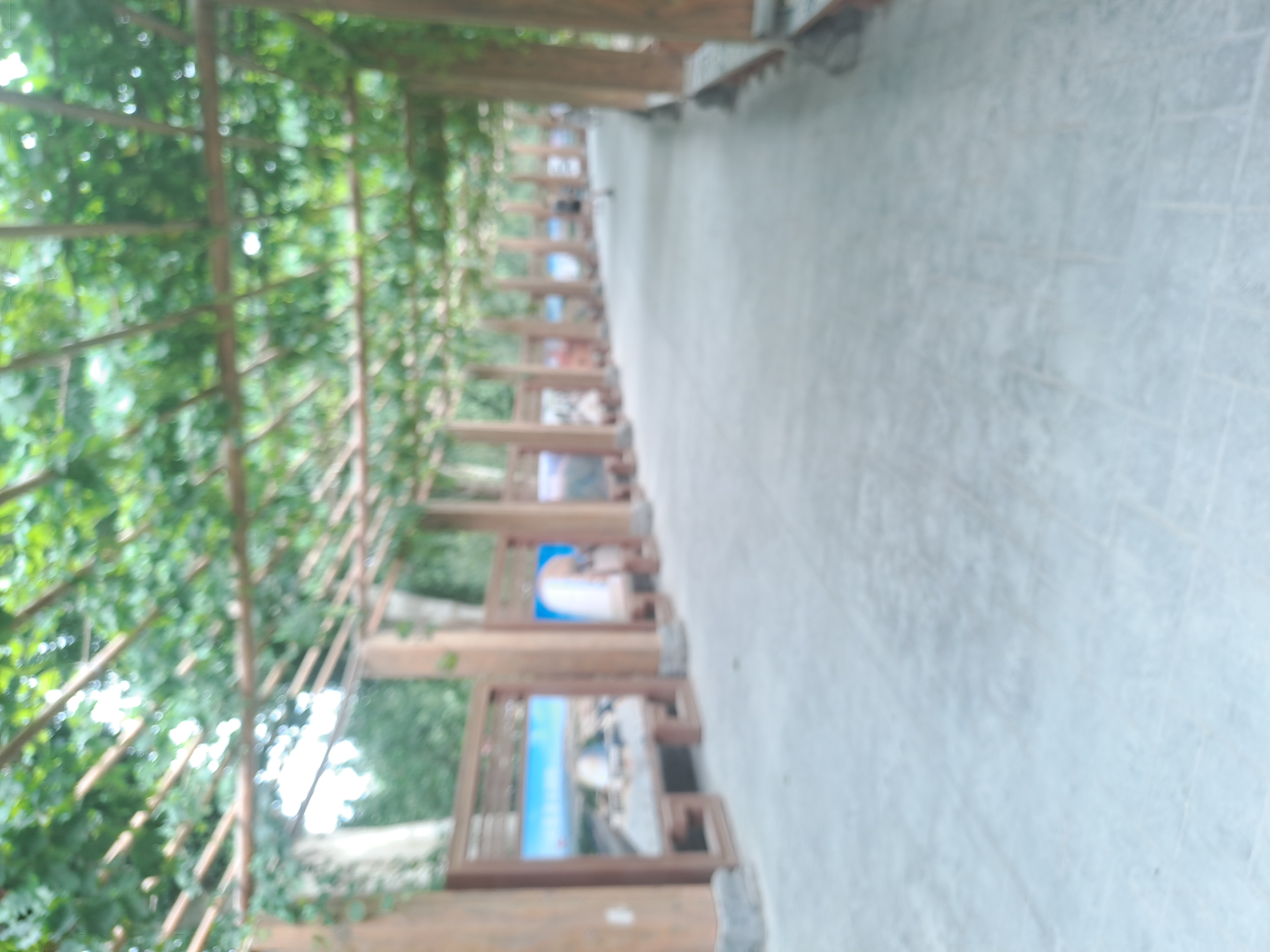

We did get to do wine tasting though in a fairly new winnery with big plans for expansion. Ashley forgot to smell one wine, which was distilled and had rather a shock. The other shock was some of the prices. The red was well out of my league so nice experience but no sale. The white was much more popular due to its lower price 😊
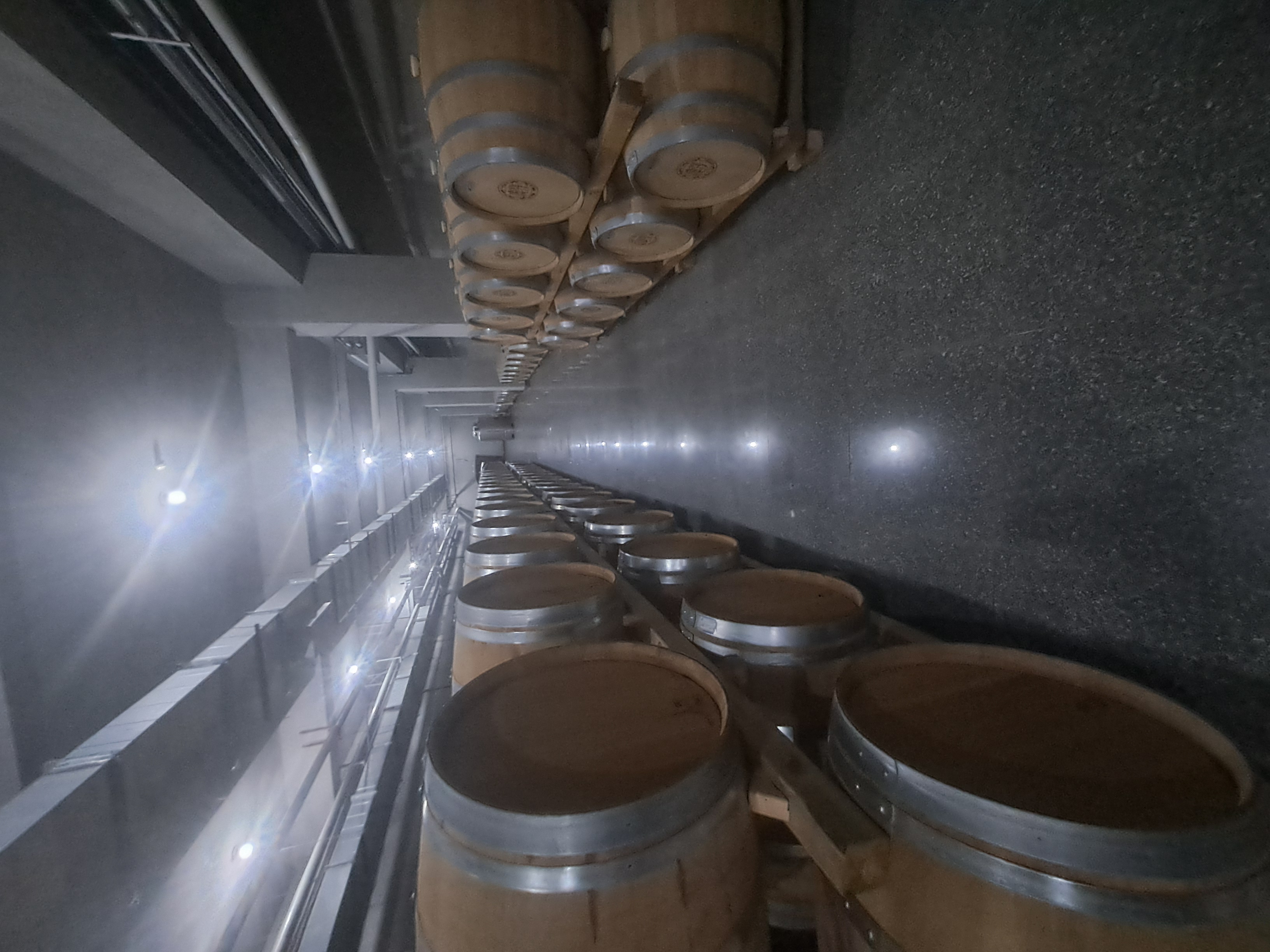
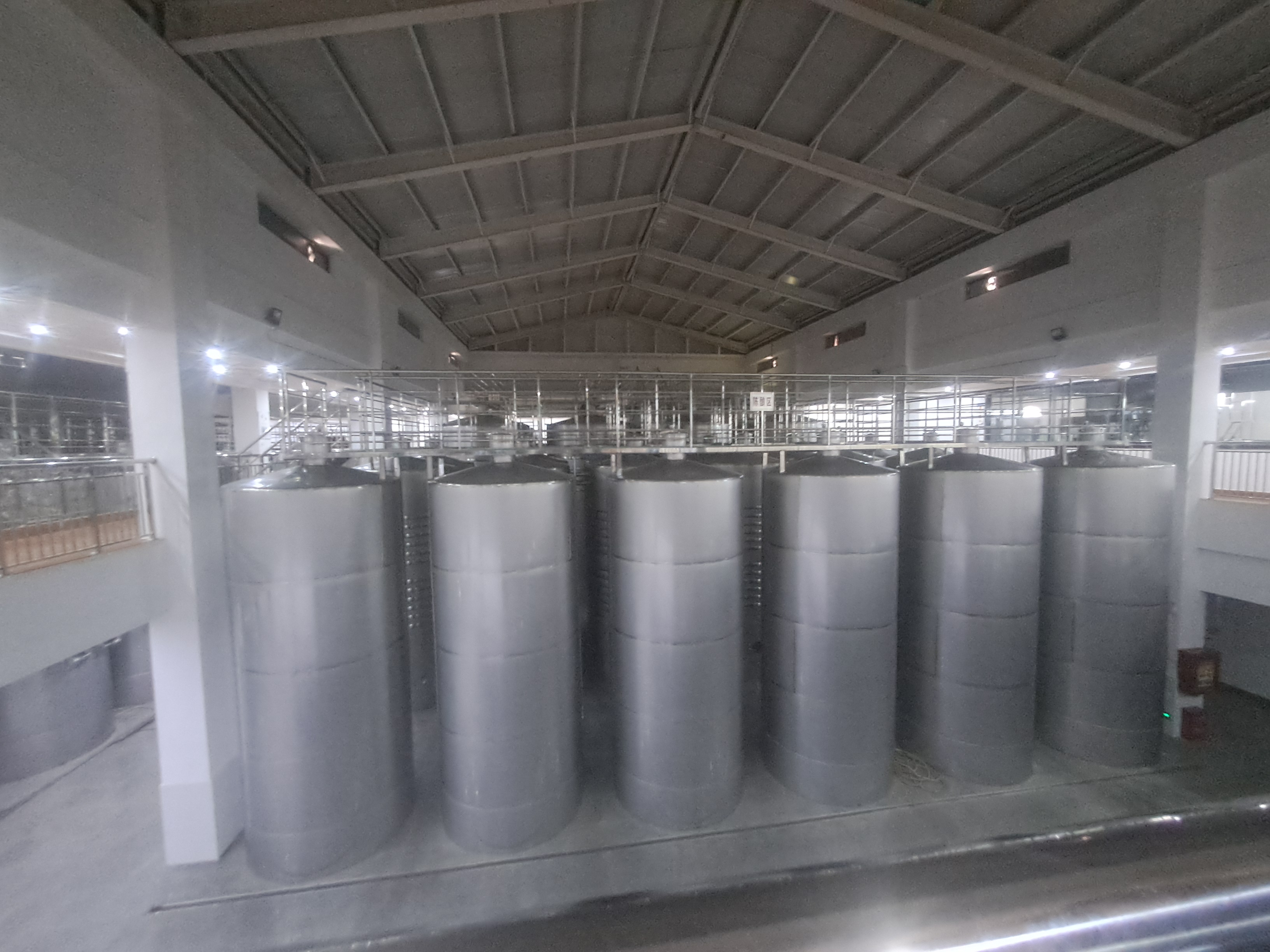
At the hottest point in China we visited the Goachang ruins. These date from the 1st century BC probably as a garrison town, but also an important oasis town on the silk road. The buildings off the main street didn’t have windows there, they were all in the internal courtyard for safety. The buildings were built downwards, cooler and passages could be blocked off in case of attack. There was a Buddhist temple still used.
The town was destroyed in the 14th century.



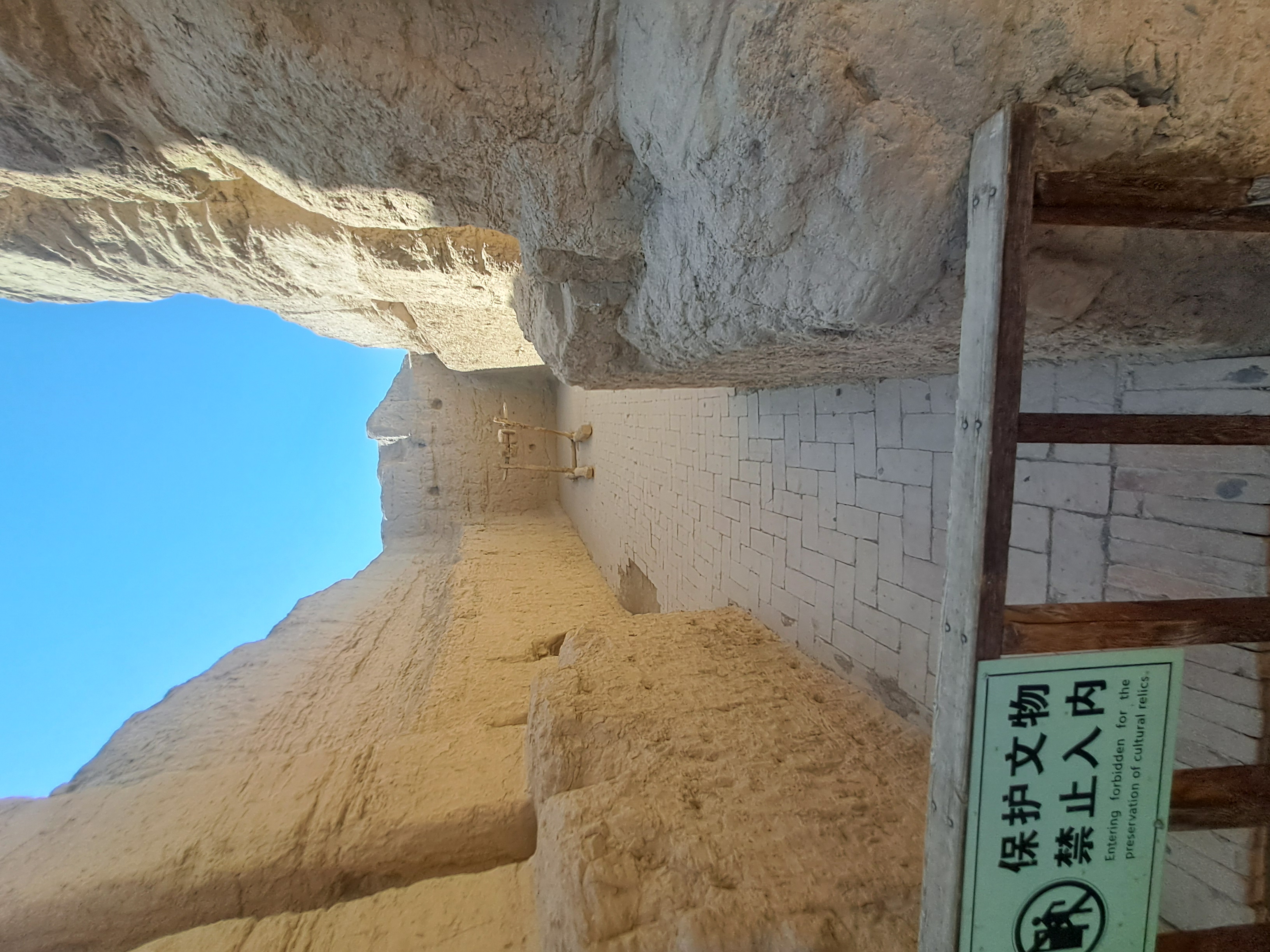
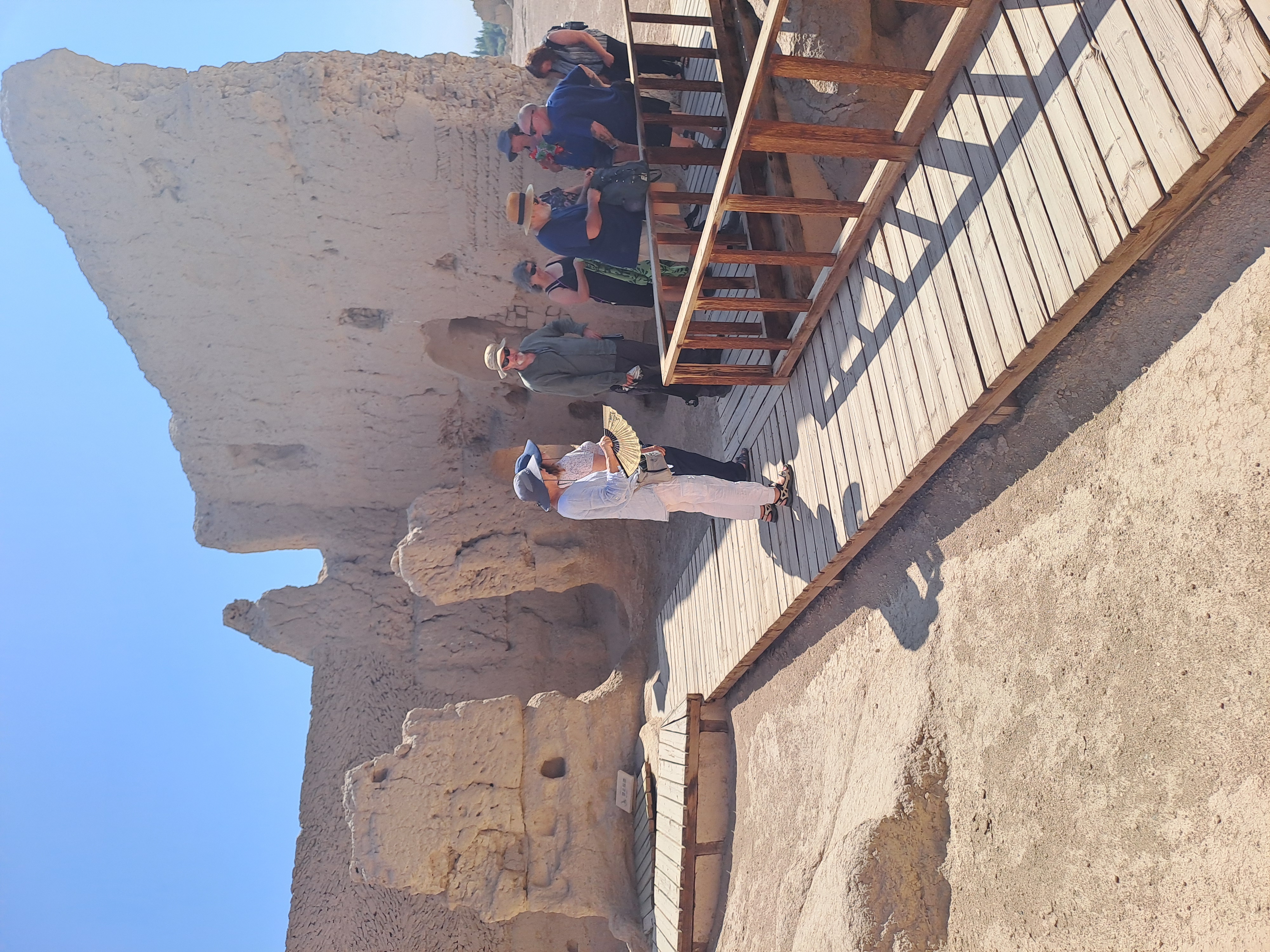


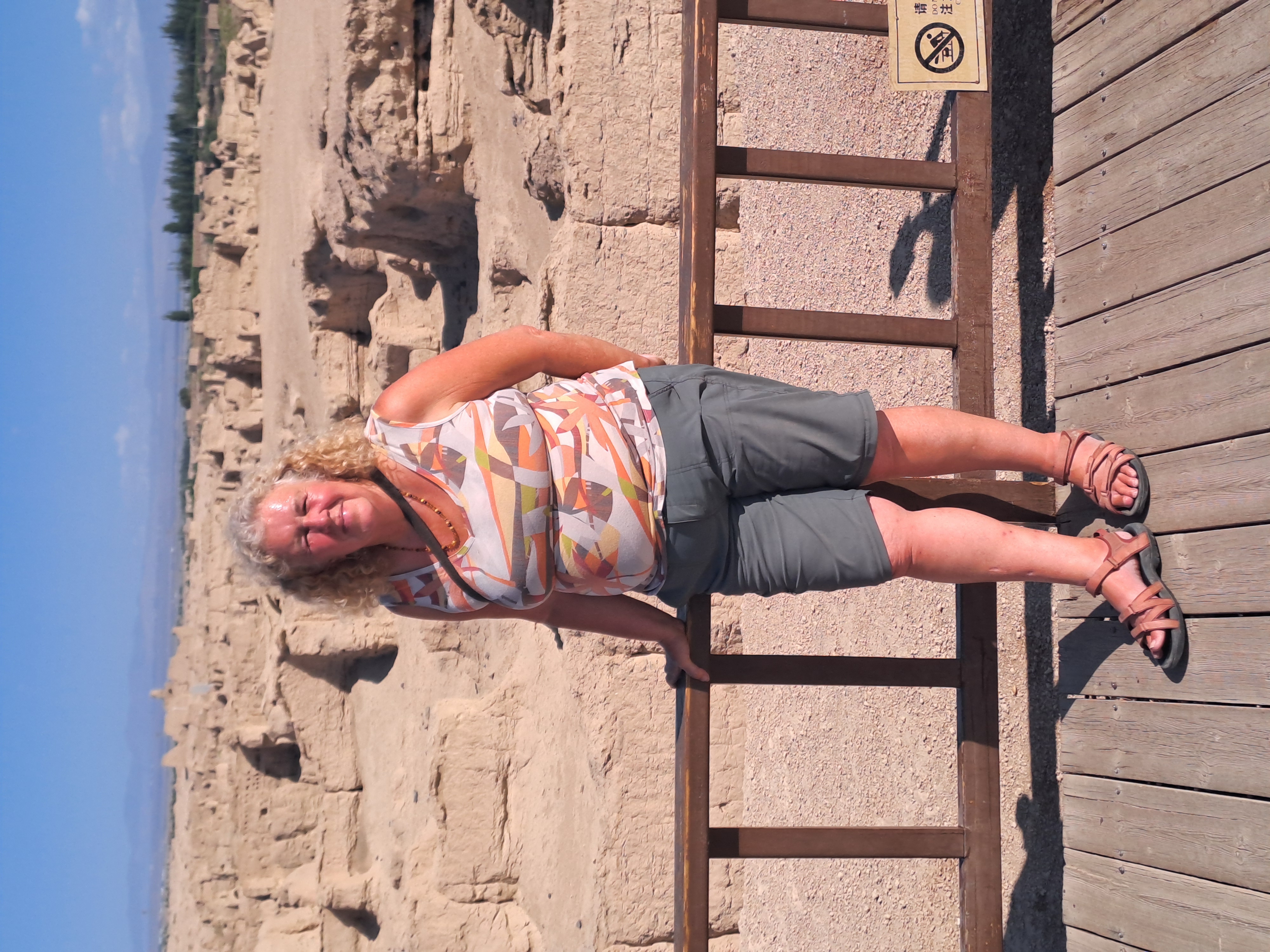
Nearby we saw the Turpan irrigation system in an exhibition along with the fibreglass wood to improve the look. The system takes water from the Flaming Mountains to where it needed in the valley by means of underground channels and wells to channel the water to the valley. Digging the channels was dangerous work and so only those men who had already had their family could go it.
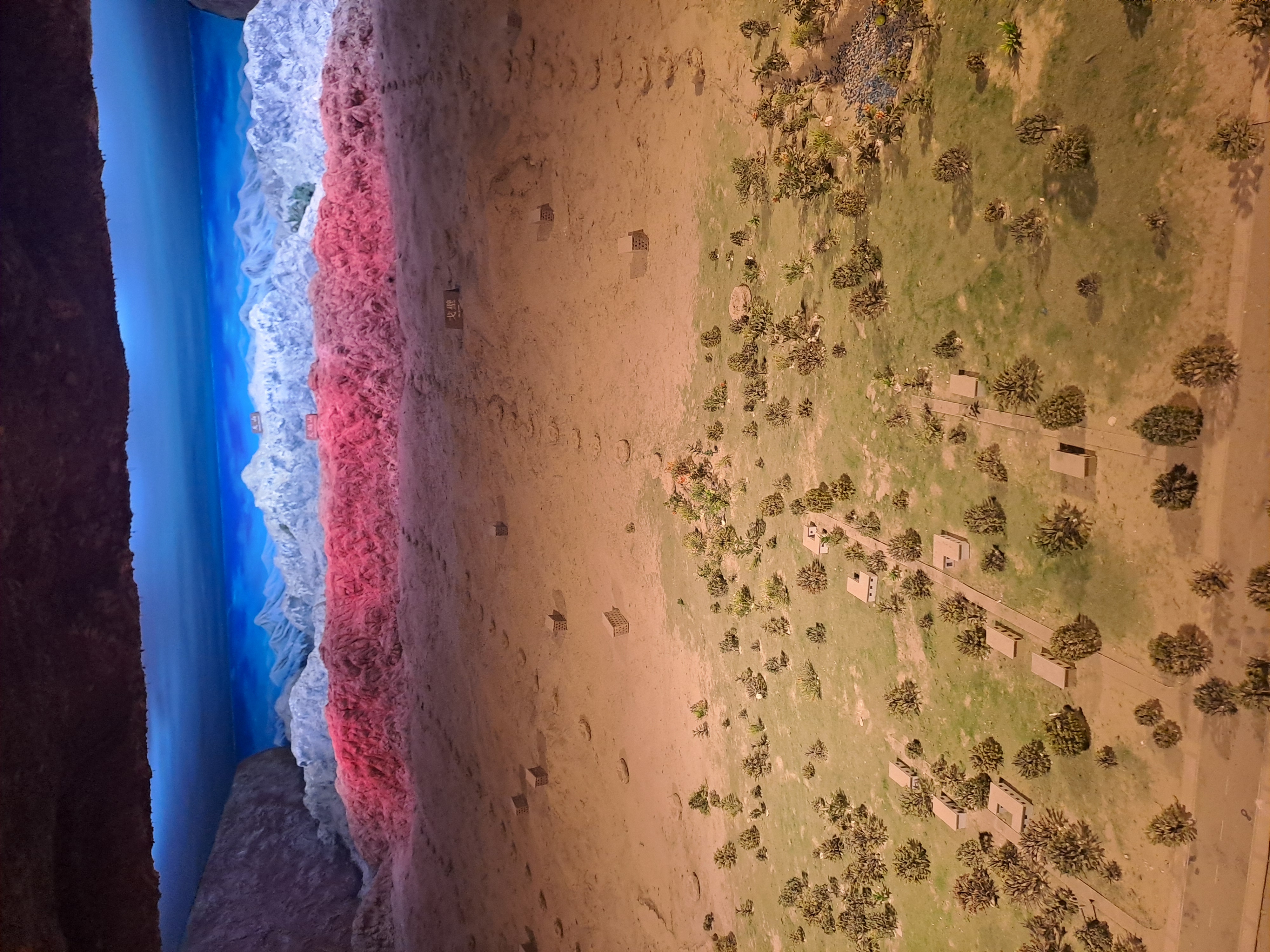
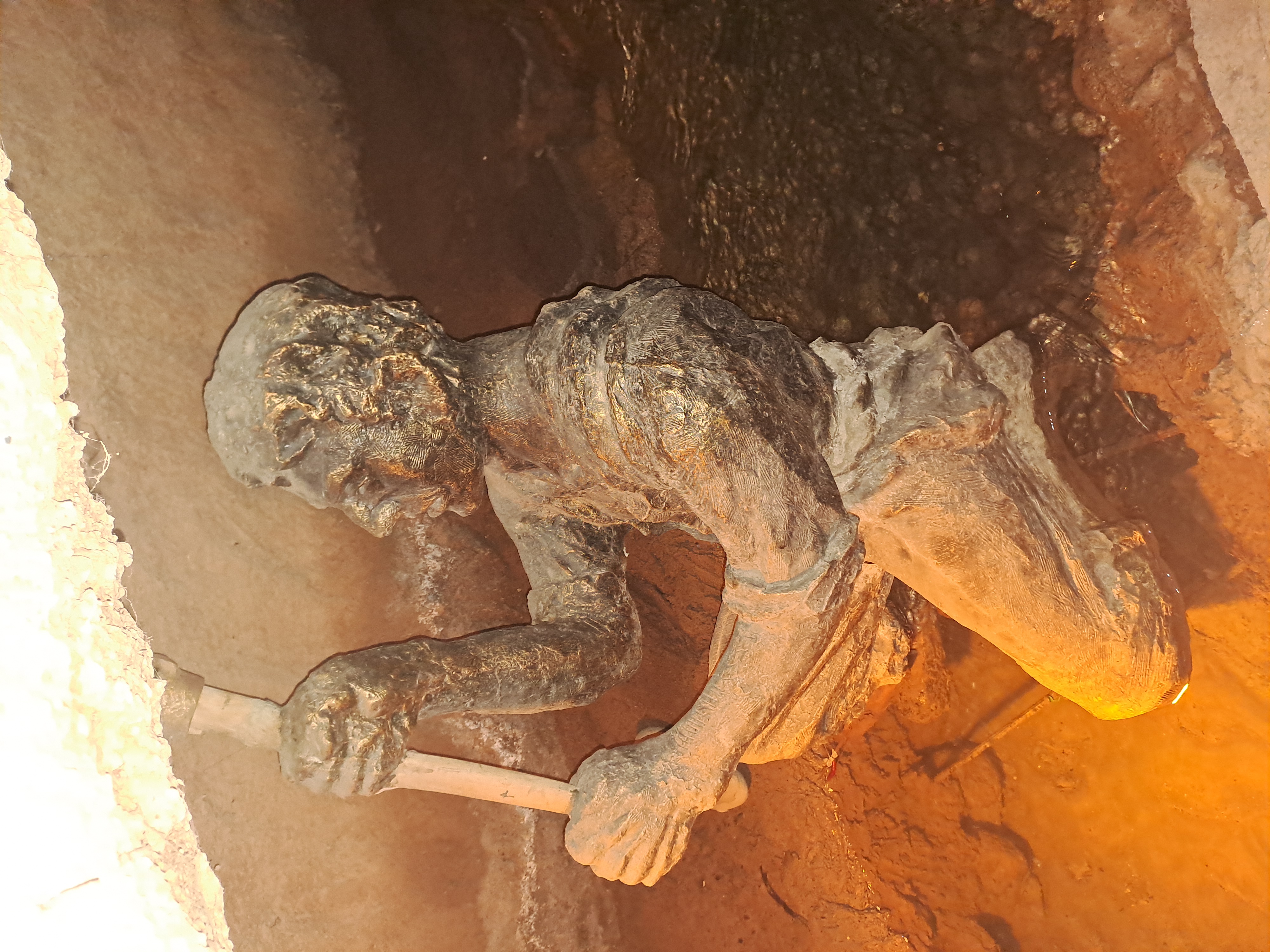
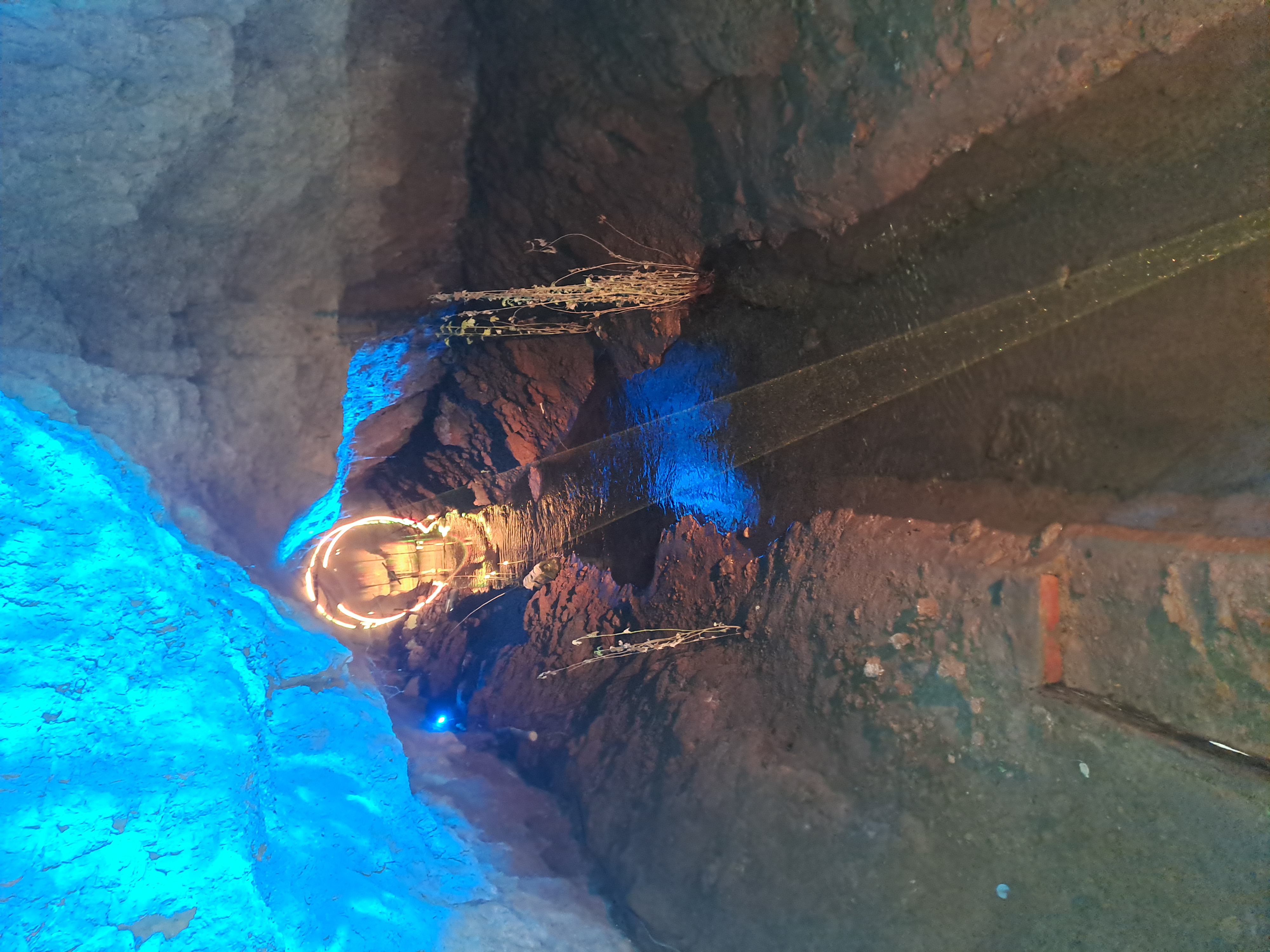
Below, us on one of the shuttle buses. It was so hot we deliberately ran into the water spray.
Pictures below show the plastic wood and performance at the irrigation exhibition.

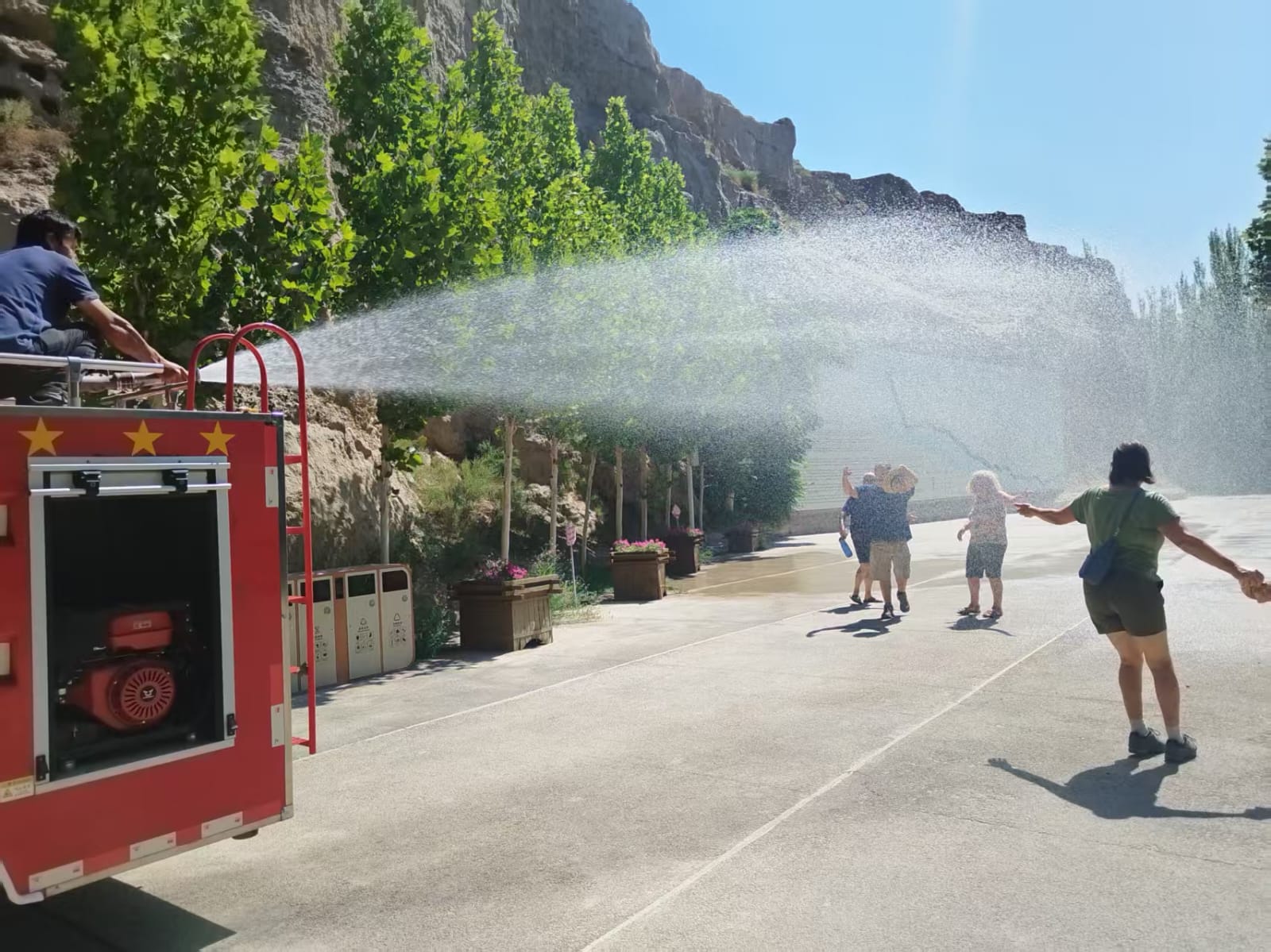

The Flaming mountains

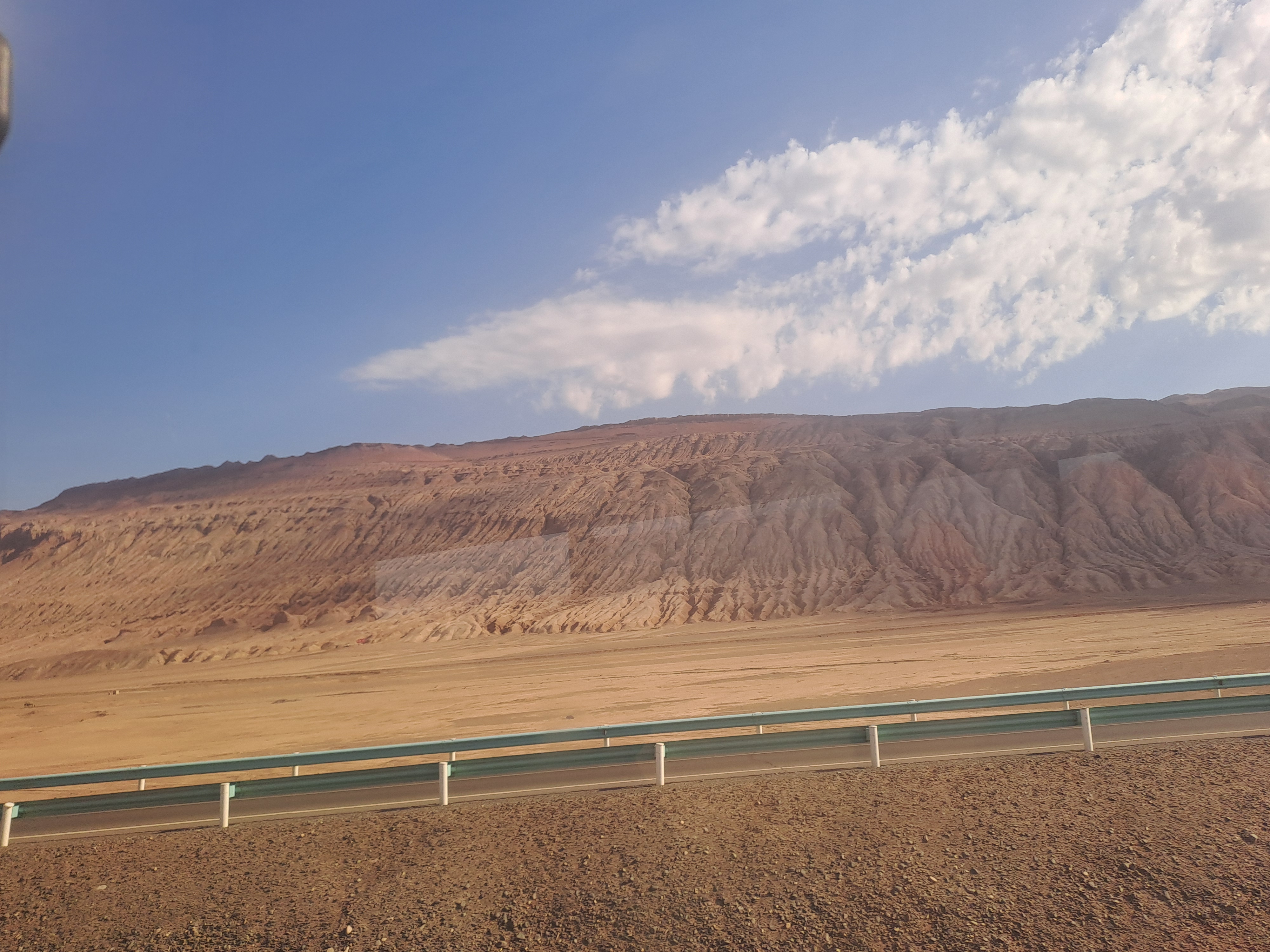
A molton salt solar power generator and Avocado ice-cream, very nice!
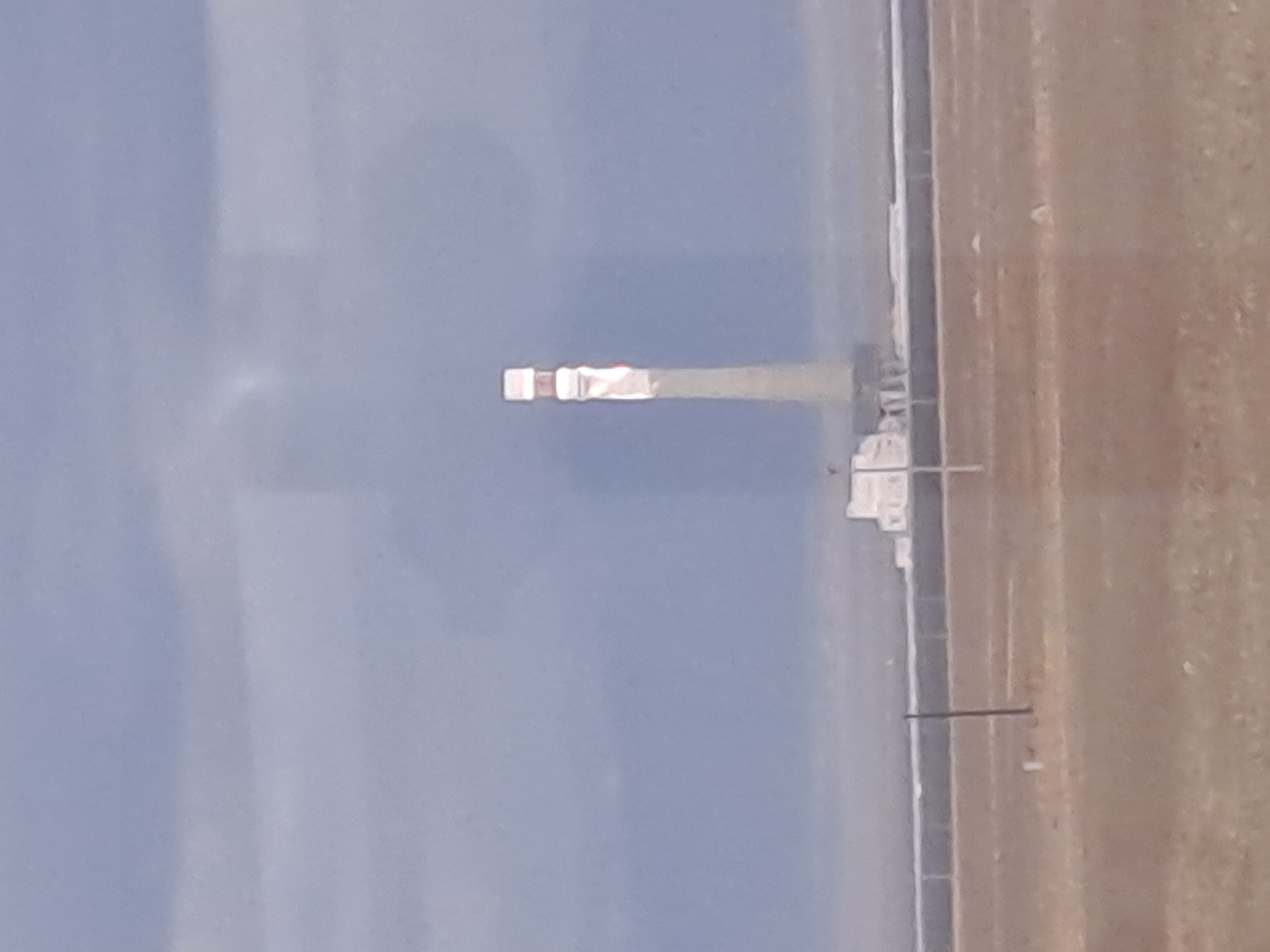
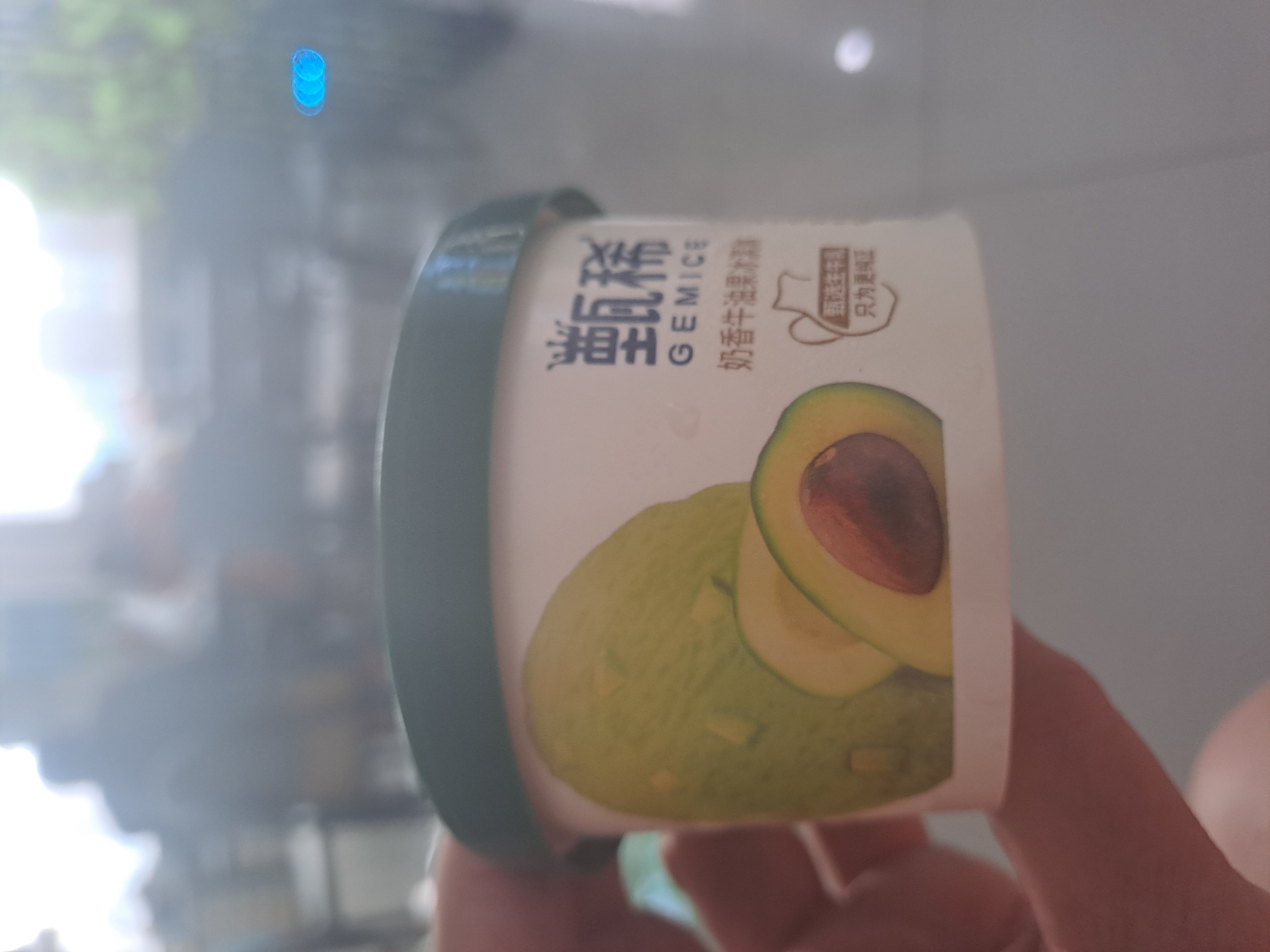
We got to see a fantastic cultural shoŵ. A story set on the silk road, of a princess falling in love with an artist. The grand Dunhaung celebration. We sat on a platform that rotated to face different stages as we watched
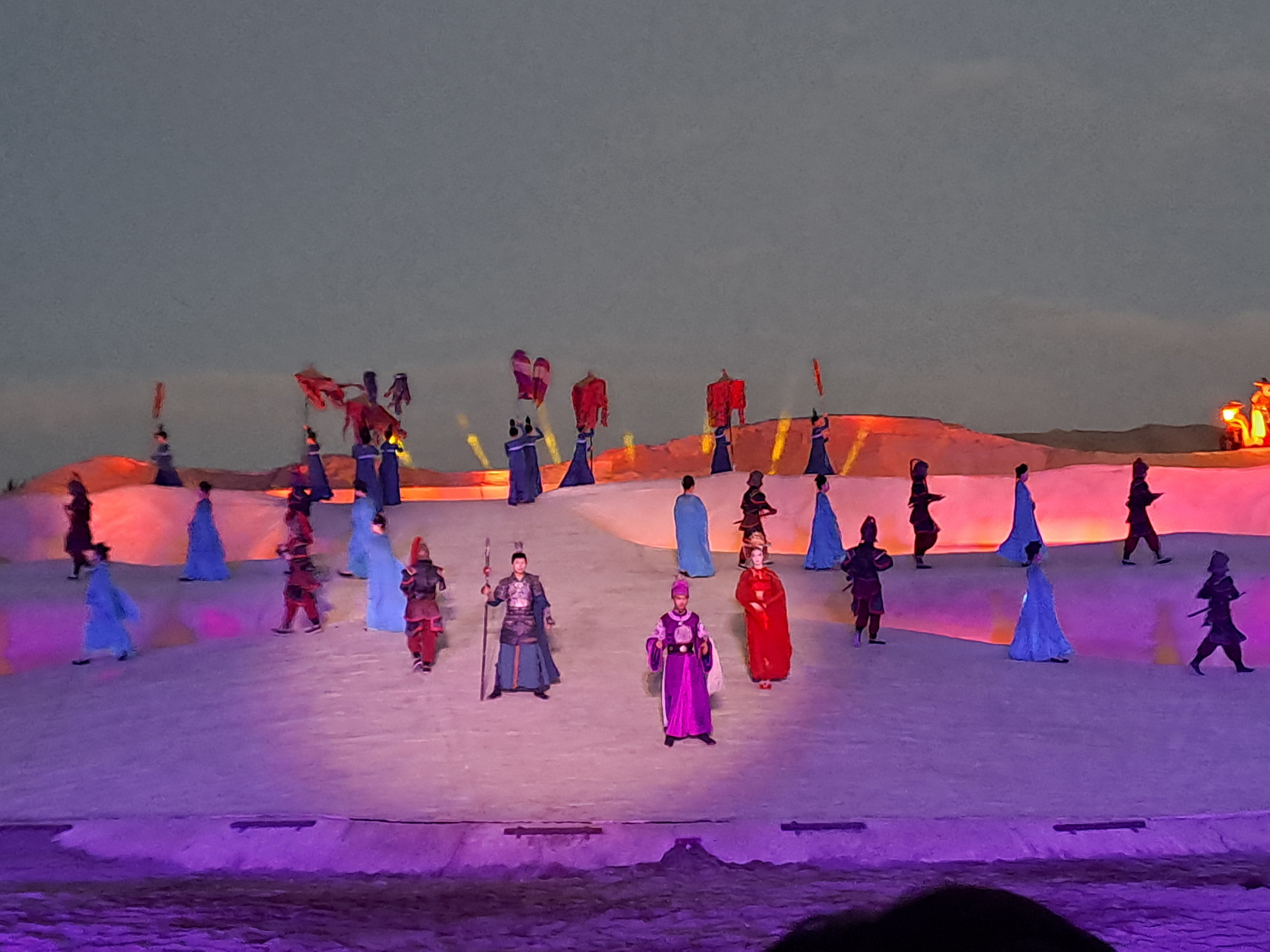
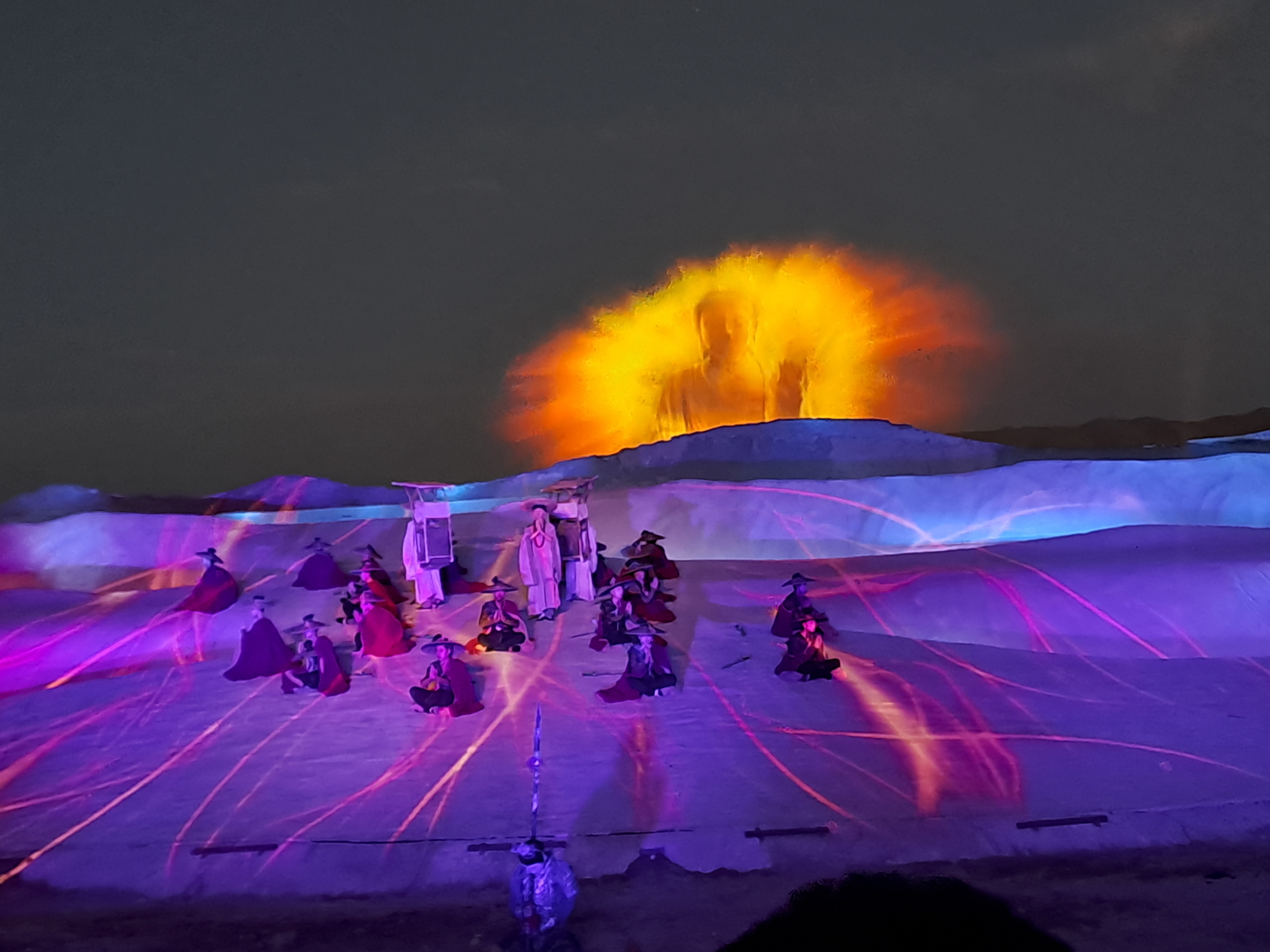

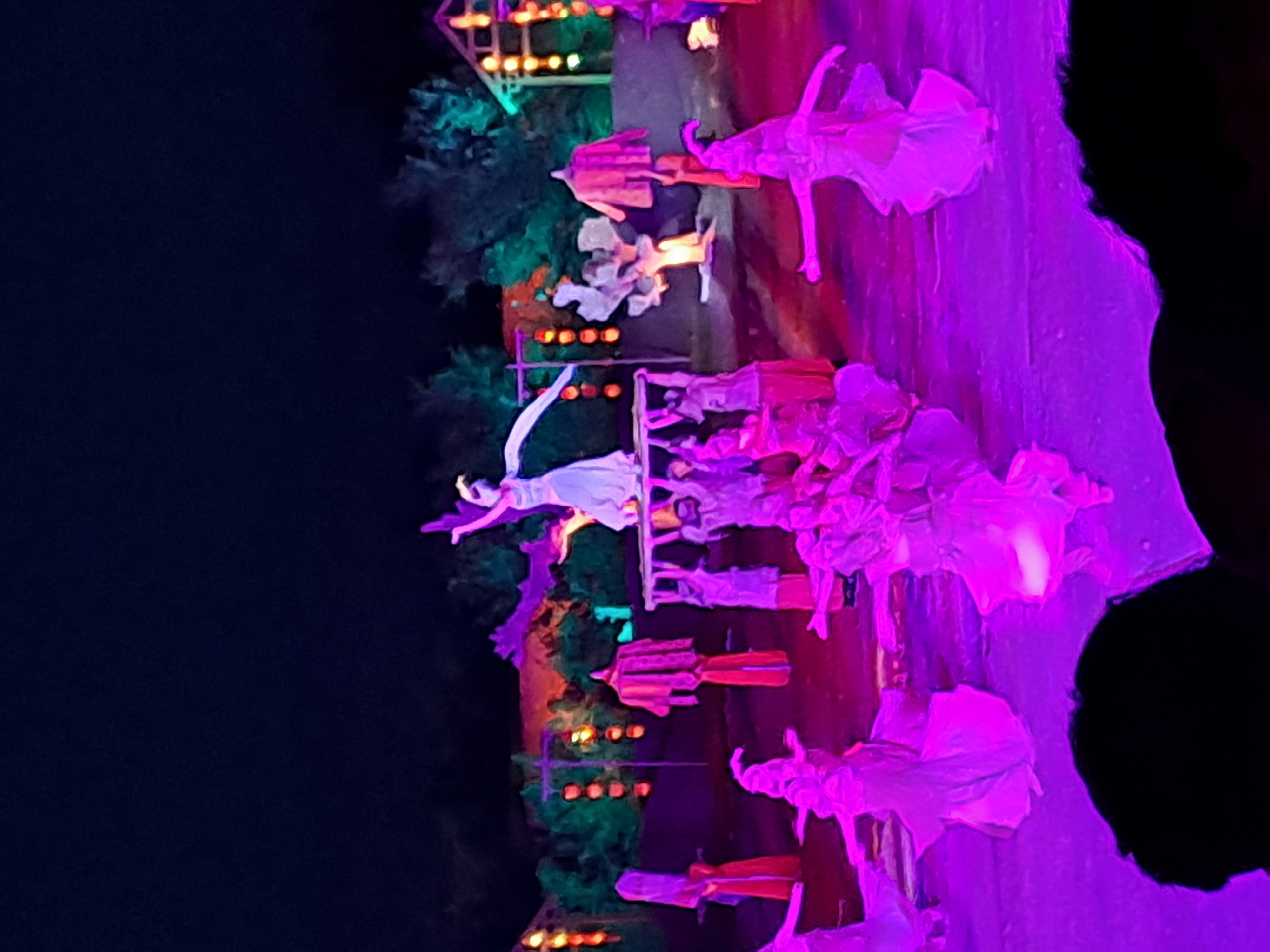
We had fantastic lighting and effects the only thing we missed was the drone show at the end because of too much wind.
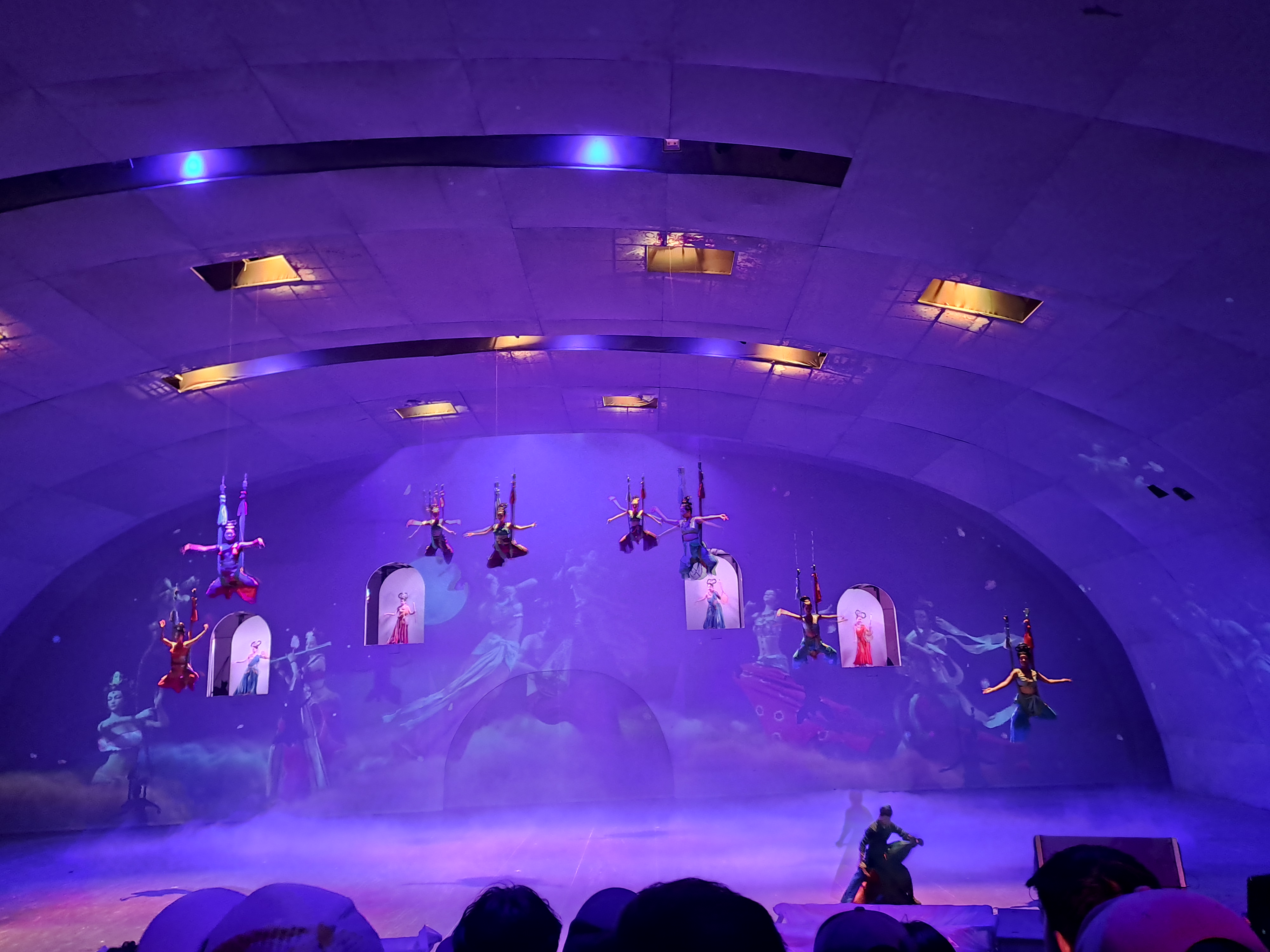

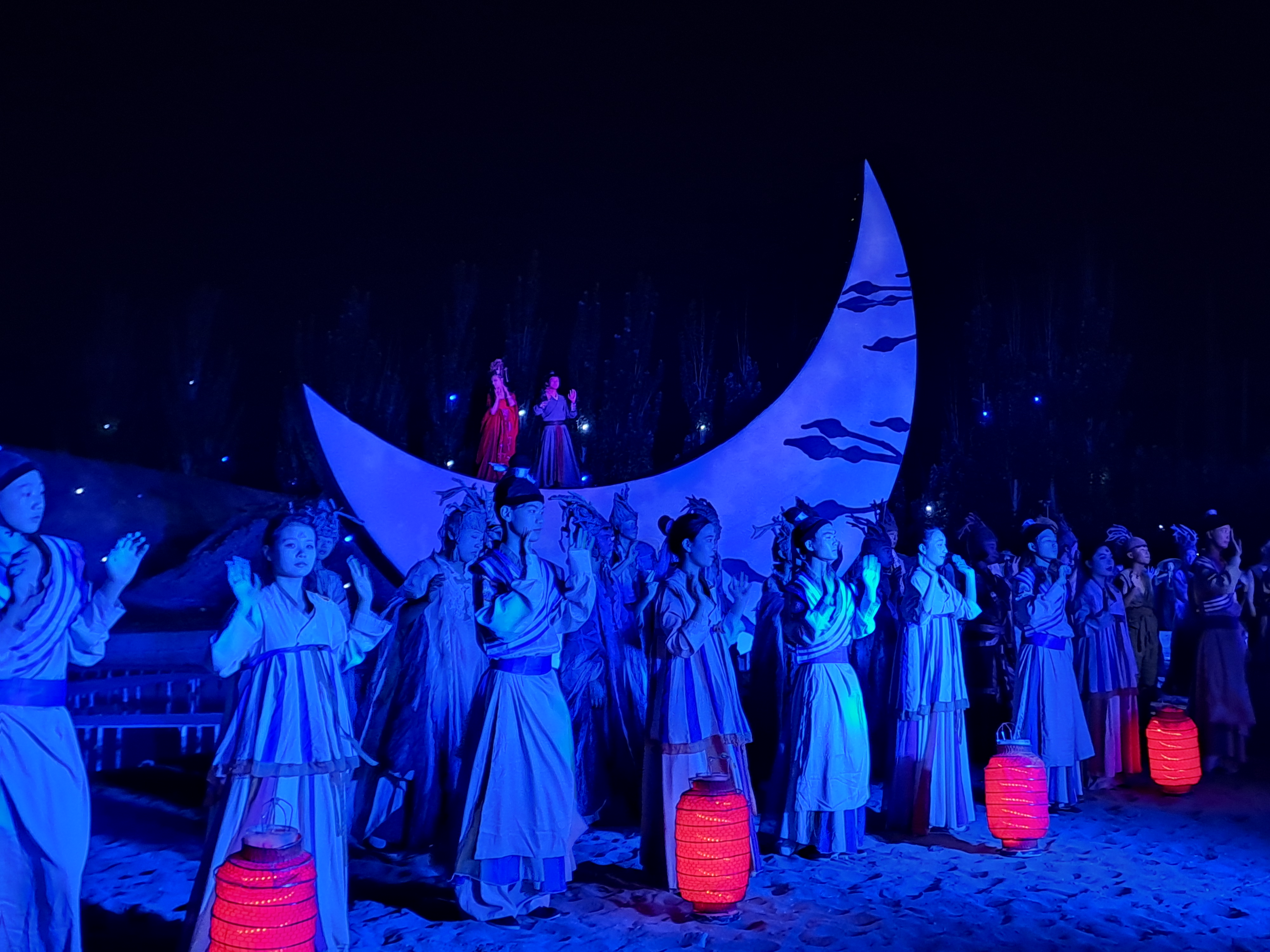

Nearby was another highlight which we had had to book when we met our guide as only 6,000 tickets are available a day. The Mogao caves. Our schedule had to fit around the time slot we were given. After the usual shuttle the experience started with two film shows. The second was amazing gazing up at a sloping screen it felt like we were there in the caves floating around seeing the sculptures. These were created as a way of gaining karma by their creators and their hired artists. Some of the caves had protective wooden porches built over them.
The important caves are all enclosed. now behind locked doors sometimes with humidity controls that limit visits. The caves are protected from light and the sculptures cannot be dusted because the dust clings to the pigment.
The surface of the sandstone has been rendered to further protect the caves.
Some restoration was carried out in the 19th century not always very well.

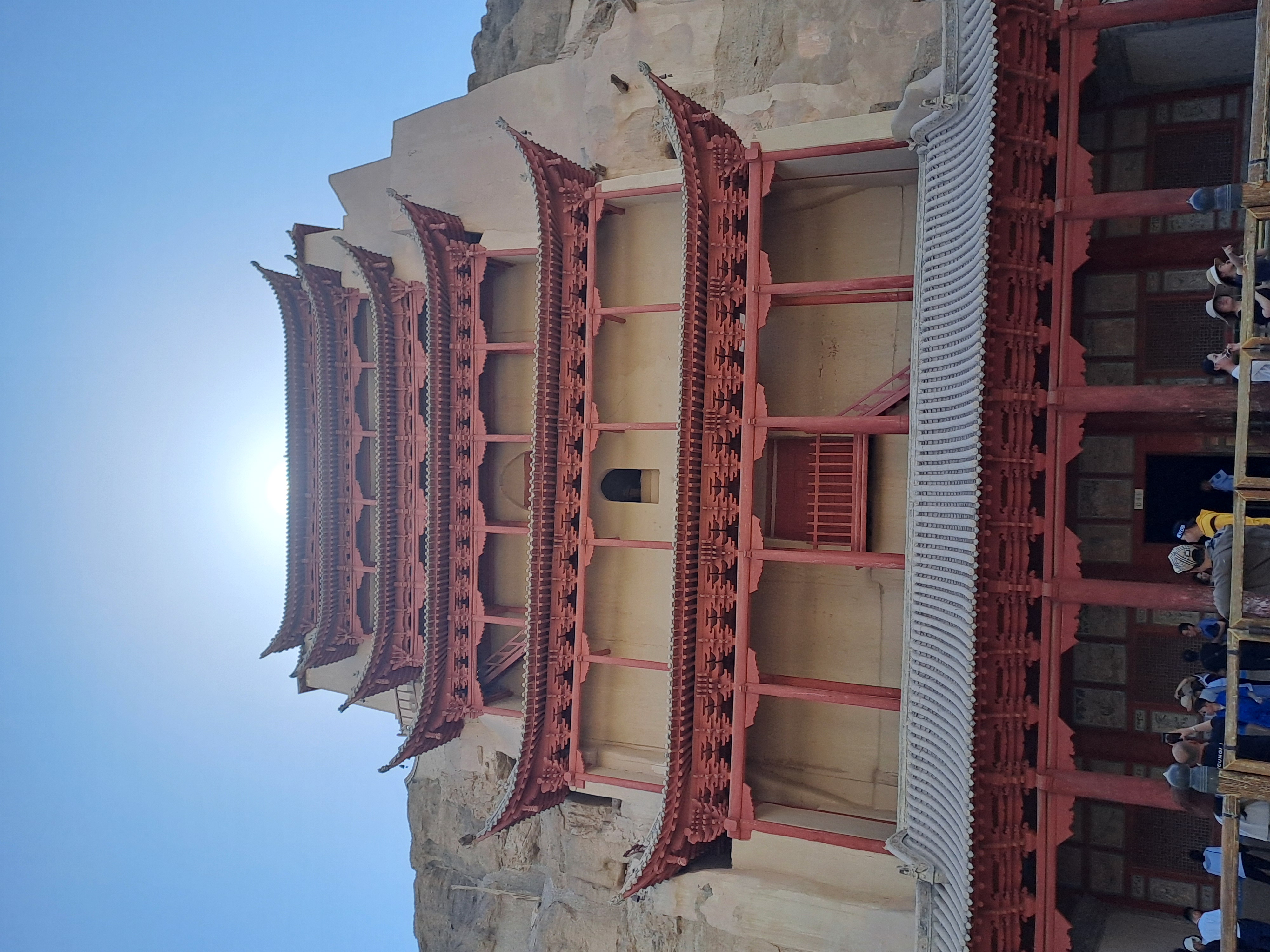
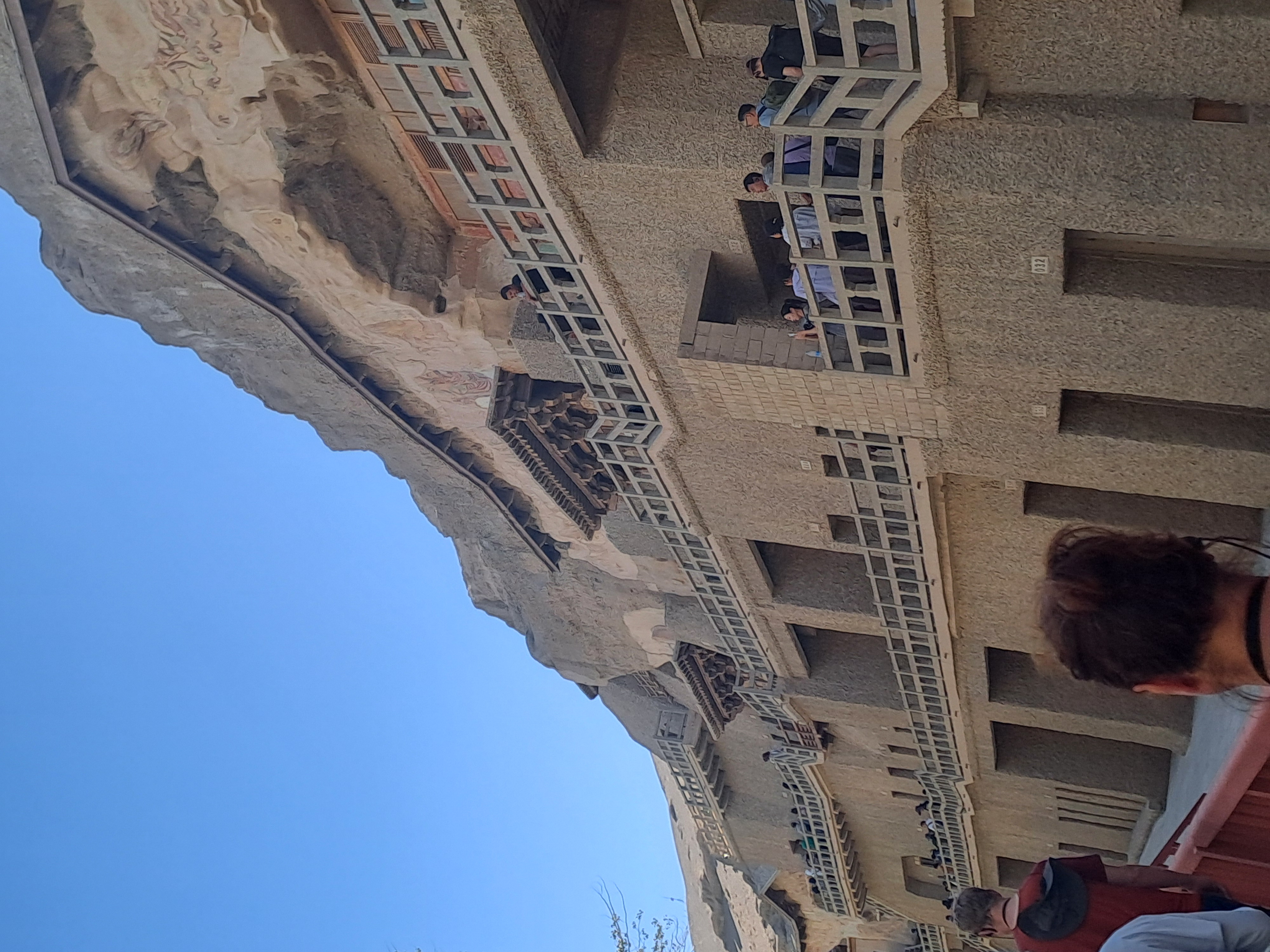
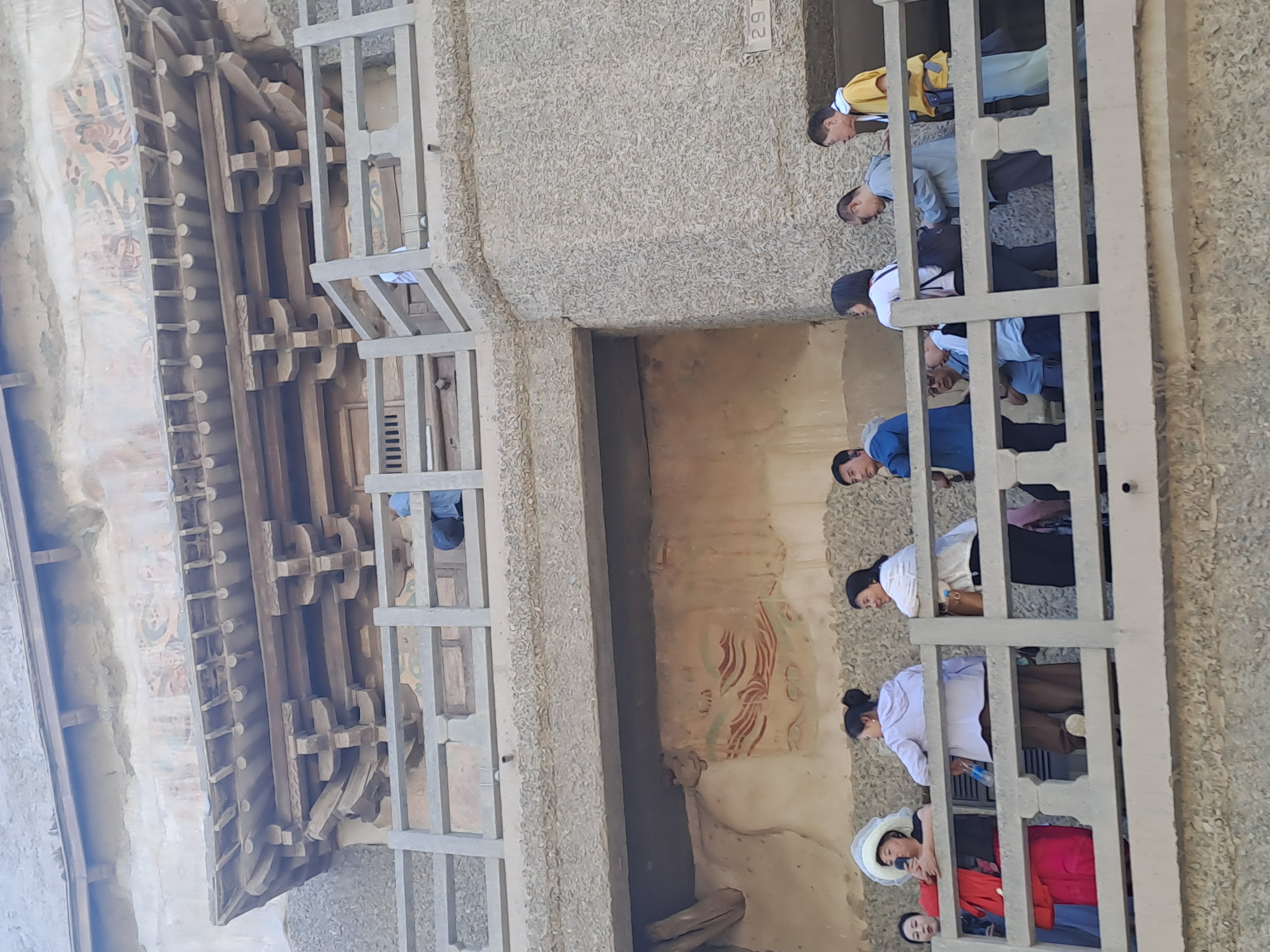
The sculptures are mud and straw built up over a wooden frame and then painted. No expense was spared gold leaf was used as was lapis laźuli which was even more expensive. The walls were covered by hundreds of painted Buddhas.
The Buddha statues are surrounded by students and mystic deities .
